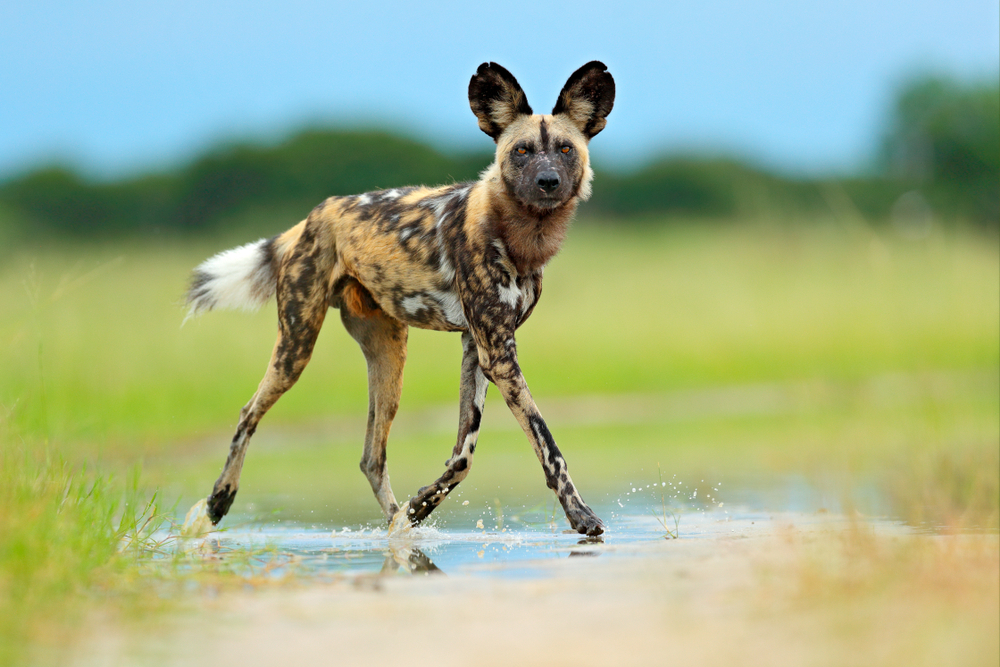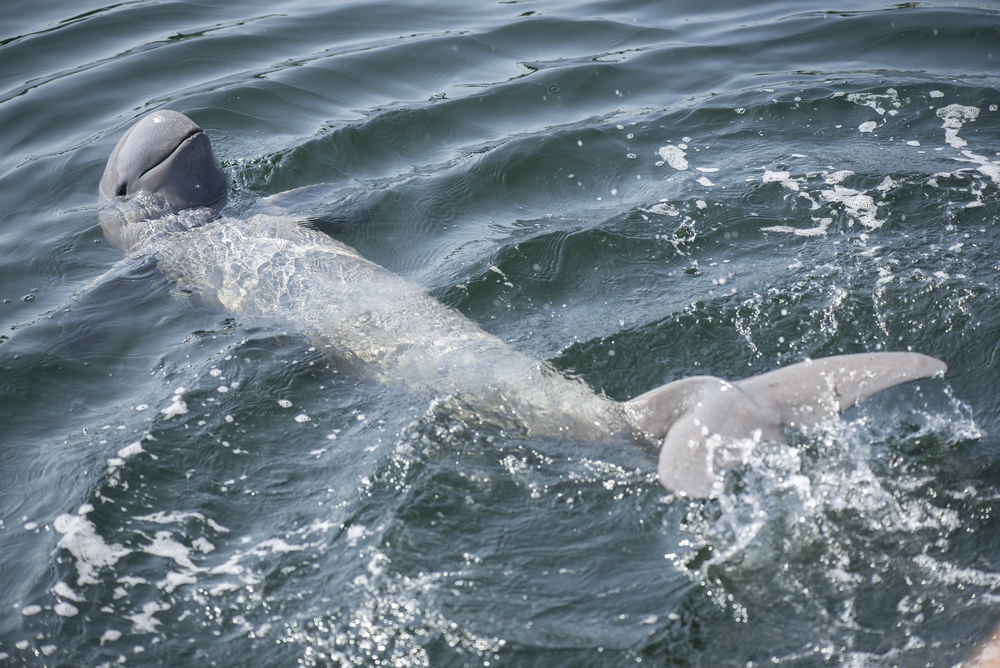The most endangered species on the planet
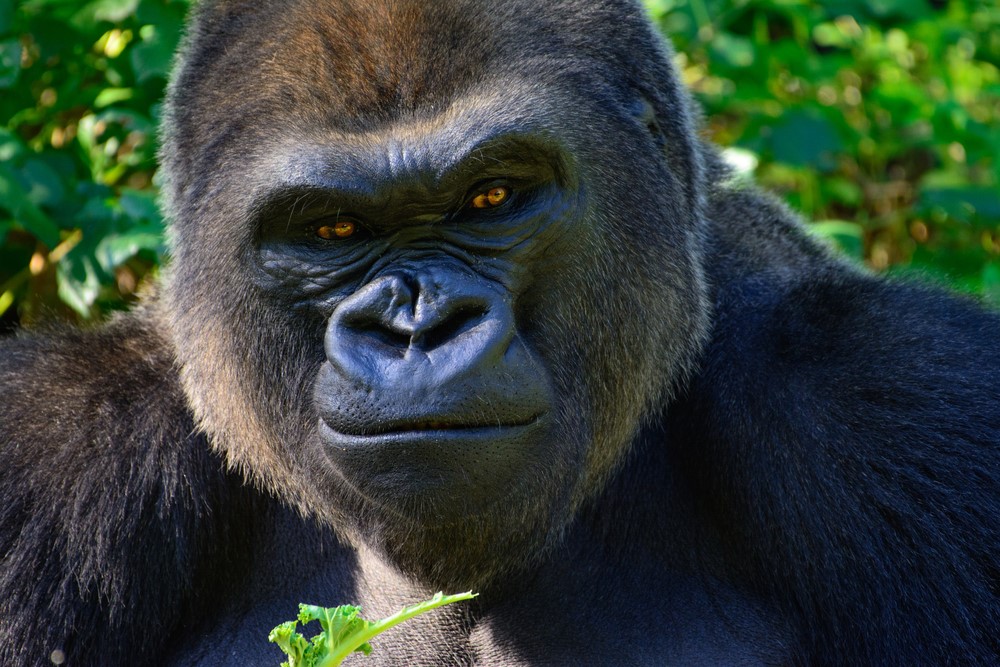
50 of the most endangered species in the world
Climate change, overfishing, poaching and deforestation are just some of the man-made issues that have led many species to the brink of extinction.
However, there is still a chance to save these beautiful animals; and organizations like the World Wildlife Fund are at the forefront of that movement.
The nongovernmental organization was founded in 1961 and works across the world to protect our planet, habitats and species.
So to mark Endangered Species Day, on May 15, we take a look at the most endangered species on the planet.
Click through to see more…
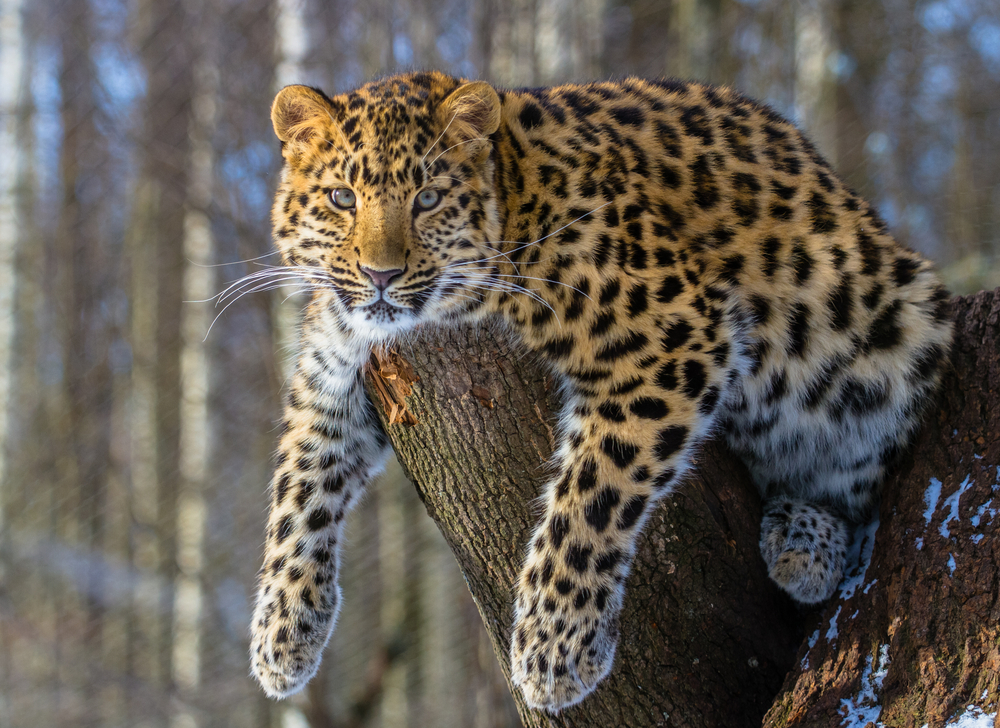
Amur Leopard
STATUS: Critically Endangered
SCIENTIFIC NAME: Panthera pardus orientalis
While most leopards live in Africa, this rare subspecies has managed to survive in Far East Russia. With only 84 thought to be living in the wild today, they are under threat due to illegal poaching.
WWF works with local communities and governments to ensure their survival. In 2012, the Russian government created a protected area, called the Land of the Leopard National Park, which covers 650,000 acres and includes the Amur leopard's breeding areas.
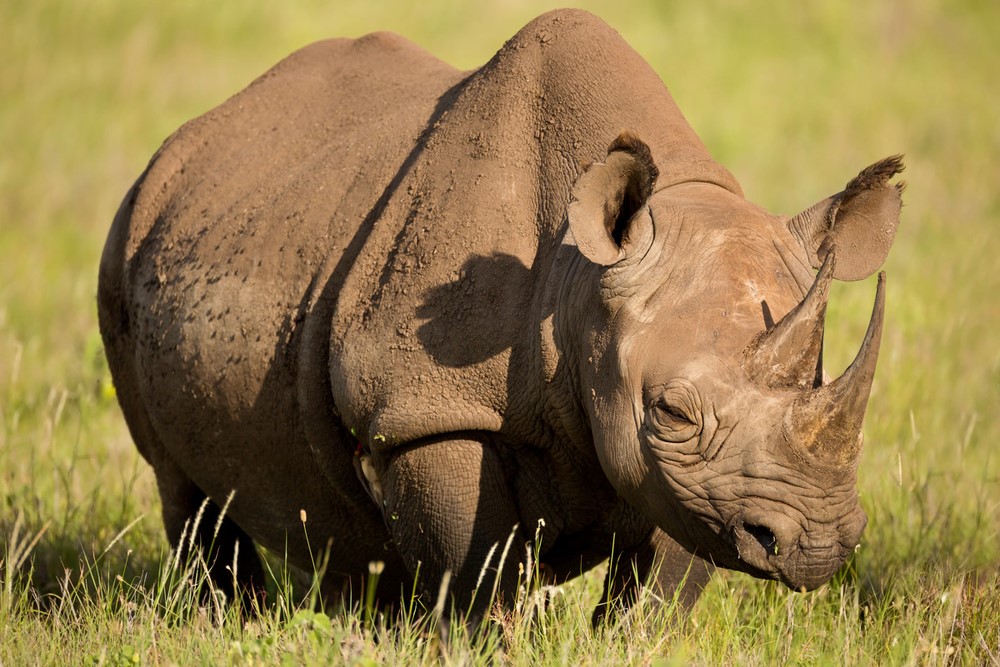
Black Rhino
STATUS: Critically Endangered
SCIENTIFIC NAME: Diceros bicornis
Black Rhinos can be found in Namibia and Coastal East Africa.
Poaching, for their horn, in the 20th century saw the population decline dramatically; and between 1960 and 1995, numbers dropped by 98%.
While there are now 5,000 black rhinos in existence, poaching is still a big threat to their survival.
Bas Huijbregts, African Species Director for WWF, said they are working with government agencies to stop poachers.
"WWF is working with government agencies and partners in South Africa, Namibia and Kenya, to support law-enforcement agencies, build supportive surrounding communities, develop and build on innovative tech solutions, and equip and train rangers to stop poachers," he said.
"Also, and to ensure healthy and growing black rhino populations, WWF supports efforts to establish new black rhino populations via translocations of rhinos from high-density areas to low-density areas with suitable habitat."
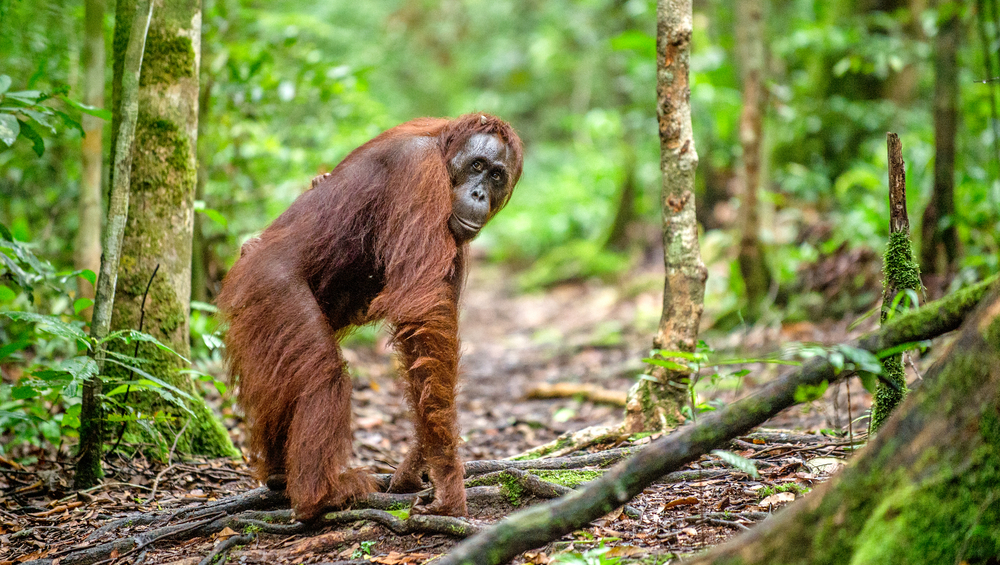
Bornean Orangutan
STATUS: Critically Endangered
SCIENTIFIC NAME: Pongo pygmaeus
Over the last 60 years, the population of Bornean orangutans has dropped by 50%. The species is divided into three subspecies based on where they live on the island of Borneo — Northwest Bornean, Northeast Bornean and Central Bornean.
The Northwest Bornean orangutans are the most threatened due to deforestation and hunting. There are now believed to be just 1,500 left. The WWF has been working closely with wildlife trade-monitoring networks to ensure safety of the Bornean orangutans.
"Hunted, sold, pushed out of their forest homes—the plight of one of man's closest living relatives is of our making and yet we can help them recover, said Barney Long, senior director or Species Conservation at Global Wildlife Conservation.
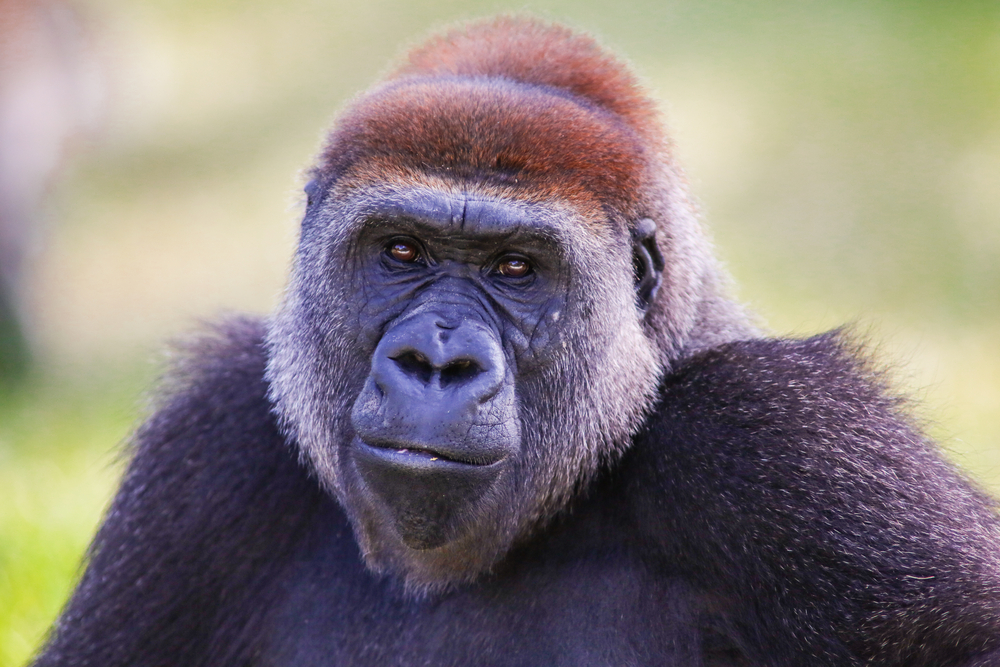
Cross River Gorilla
STATUS: Critically Endangered
SCIENTIFIC NAME: Gorilla gorilla diehli
Due to the gorillas' wariness of humans and tendency to live in rugged areas, only in the last 10 years have scientists learned more about these primates.
Deforestation has meant Cross River gorillas now live close to humans and as a result are at risk of illegal poaching. And while it is illegal to kill gorillas in Cameroon and Nigeria, the threat is very real.
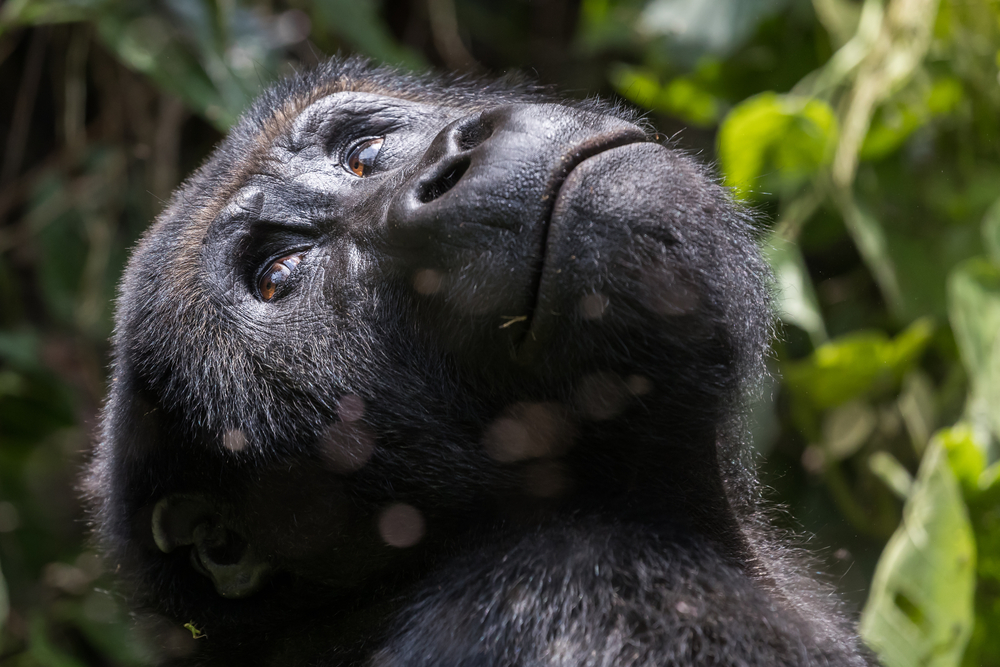
Eastern Lowland Gorilla
STATUS: Critically Endangered
SCIENTIFIC NAME: Gorilla beringei graueri
The largest of the four gorilla subspecies, the Eastern Lowland gorilla mainly lives on fruit.
Civil unrest in the Democratic Republic of Congo (DRC), where they live, has led to the shrinking of this gorilla's habitat.
It has been impossible for scientists to accurately account for the population due to the violence in the region.
Poaching has also been an issue, with poachers invading the Kahuzi-Biega National Park, which is in the DRC. The WWF has been working with park staff and other organizations to regain control of the park.
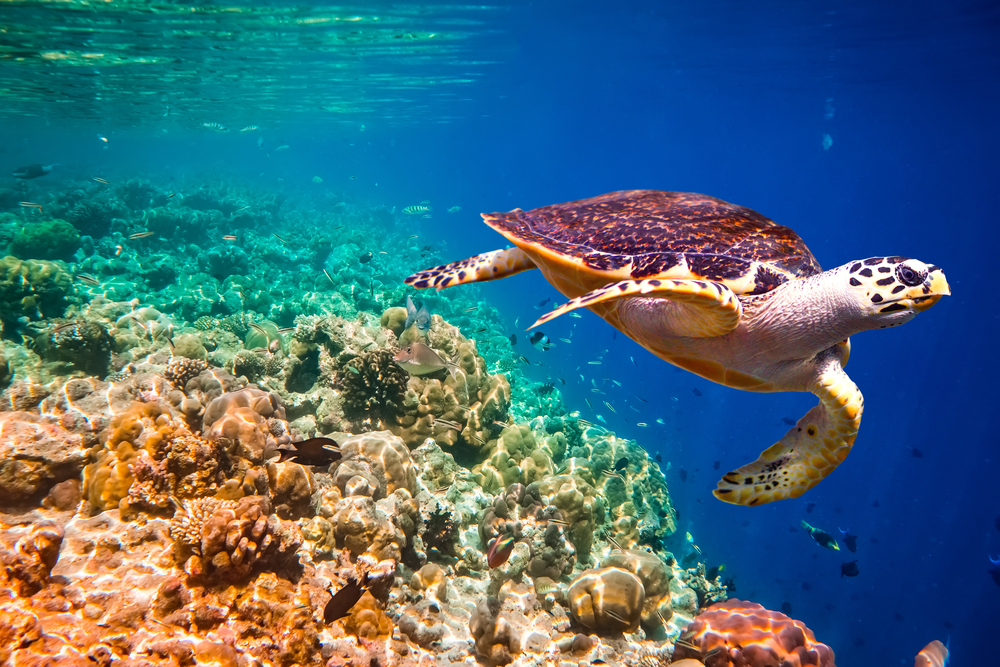
Hawksbill Turtle
STATUS: Critically Endangered
SCIENTIFIC NAME: Eretmochelys imbricata
Mainly found in tropical waters, and near coral reefs, sea turtles have lived in our seas for the last 100 million years, and they are a vital part of the marine ecosystem.
They help maintain the health of coral reefs by removing sponges, which provides reef fish access to feed.
Despite being protected under the Convention on International Trade in Endangered Species of Wild Fauna and Flora, the Hawksbill turtles (Eretmochelys imbricata) are most threatened by wildlife trade. Pollution, excessive egg collection and coastal development also play a part in their decline.
WWF has been working with fisheries to make turtle-friendly hooks and with local communities to try to stop them from harvesting eggs.
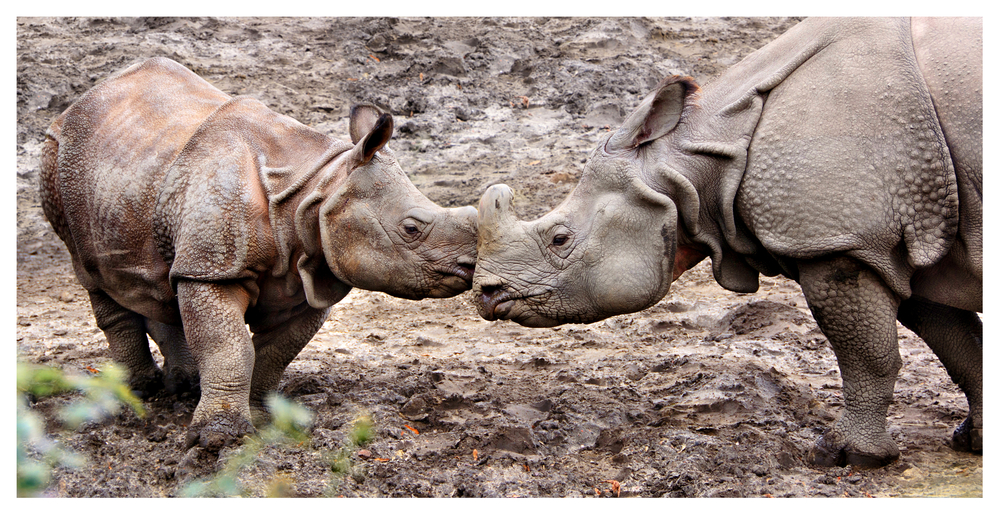
Javan Rhino
STATUS: Critically Endangered
SCIENTIFIC NAME: Rhinoceros sondaicus
With a population of around 68, the Javan rhinos are the most endangered of the five rhino species.
They once lived throughout northeast India and Southeast Asia, but can now only be found in Java' Ujung Kulon National Park, in Indonesia.
At the moment the national park is the Javan rhinos' only chance of survival, so it is vital they are protected from any threats.
To reduce the likelihood of extinction, the WWF is looking to establish a second population of Javan rhinos.
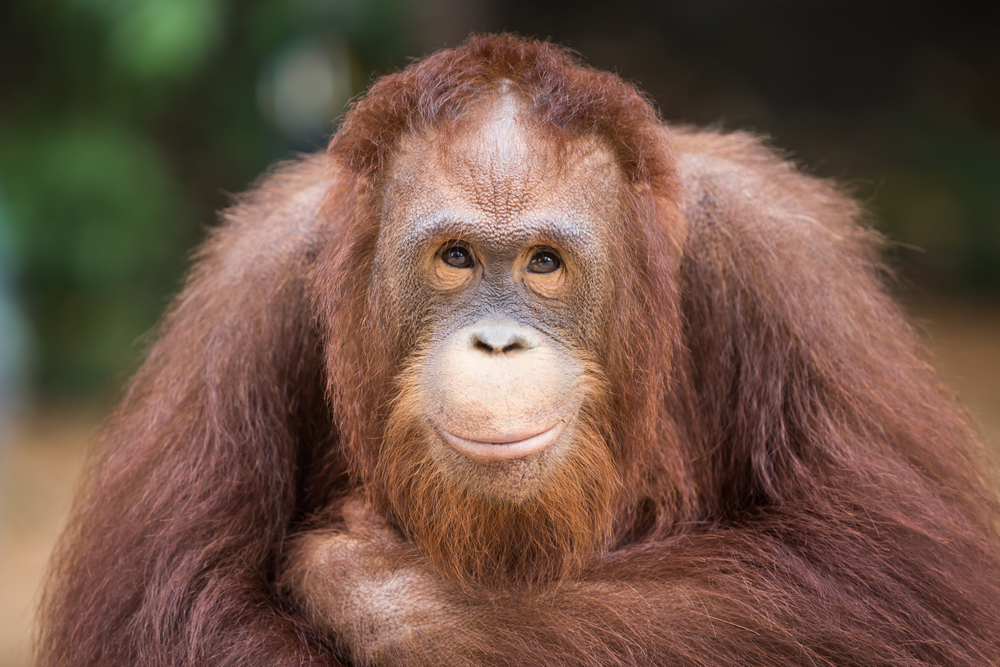
Orangutan
STATUS: Critically Endangered
SCIENTIFIC NAME: Pongo abelii, Pongo pygmaeus
Highly intelligent creatures, orangutans share 96.4% of our genes. They are known for their distinctive red fur and are considered the largest tree-dwelling animals.
There are three species — Bornean, Sumatran and Tapanuli — and they live a solitary existence in lowland forests.
Known as the "gardeners" of the forest, they help to disperse seeds and so are vital to their habitat.
Deforestation, illegal hunting and habitat loss have led to the fall in orangutans with the Tapanuli species being the most endangered, with only 800 individuals alive.
In the 1970,s the WWF started working on orangutan protection, including initiatives to stop poaching, conserve habitat and end pet trade.
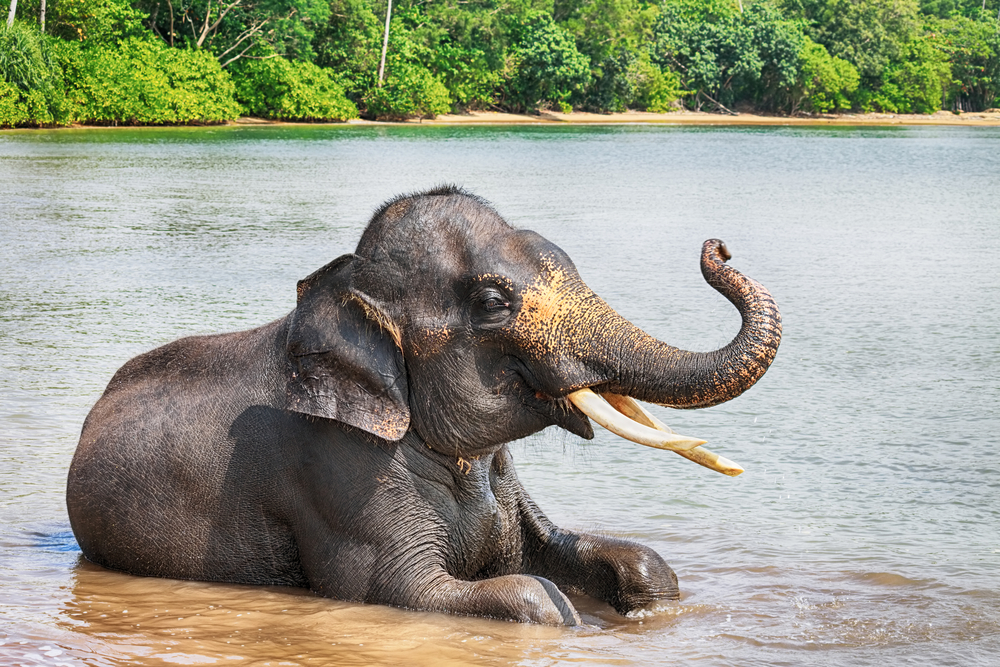
Sumatran Elephant
STATUS: Critically Endangered
SCIENTIFIC NAME: Elephas maximus sumatranus
Found in Borneo and Sumatra, the Sumatran elephant shares its habitat with the Sumatran rhino, tiger and orangutan.
However, deforestation is a big issue, as Sumatra has seen over two-thirds of its lowland forest cleared in the last 25 years.
Ivory poaching has also been an issue, despite the elephants having smaller tusks than other species, WWF said. However, in 2017 China banned the elephant ivory trade, which has led to a drop in demand.
Barney Long, senior director of Species Conservation at Global Wildlife Conservation, said: "Unless deforestation on the island of Sumatra is halted, we could possibly see the Sumatran elephant be restricted to just a few remote populations within our lifetimes."
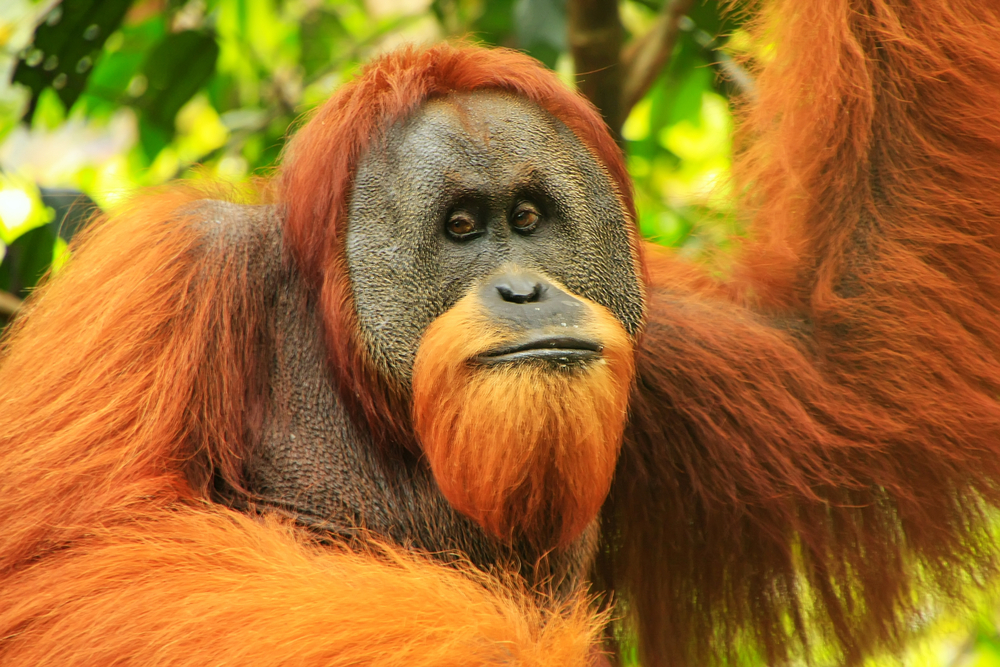
Sumatran Orangutan
STATUS: Critically Endangered
SCIENTIFIC NAME: Pongo abelii
The Sumatran orangutan lives almost exclusively in the trees of tropical forests in Sumatra. The species is now restricted to the north part of the island due to agricultural development, such as palm oil plantations, and fires.
A major road set to be built in northern Sumatra could threaten one of the last remaining habitat areas.
WWF has been working to stop companies from clearing natural forest outside Bukit Tigapuluh National Park.
"The fate of Sumatran orangutans is inextricably linked to the islands' fast-disappearing forests. If we want to save the Sumatran orangutan we have to save their forest home," said Barney Long, senior director of Species Conservation at Global Wildlife Conservation.
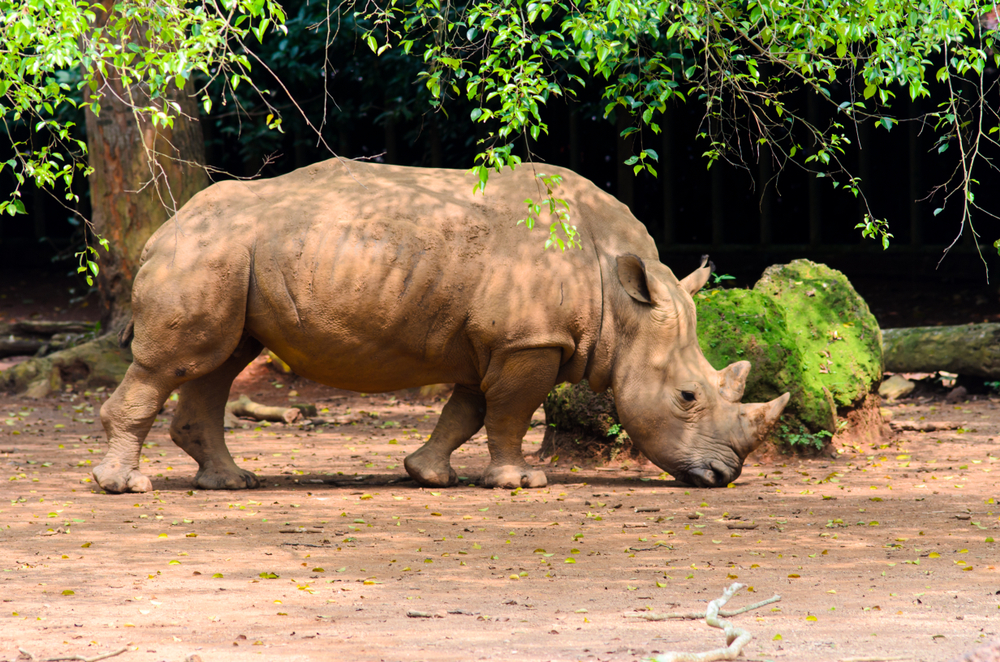
Sumatran Rhino
STATUS: Critically Endangered
SCIENTIFIC NAME: Dicerorhinus sumatrensis
The Sumatra rhino is the smallest of all living rhinos and the only rhino in Asia to sport two horns.
They are now found only in Borneo and Sumatra, though they once lived in the eastern Himalayas, eastern India and Thailand before becoming extinct in those areas. A third subspecies is also believed to be extinct.
Due to low breeding, poaching due to an increased demand for rhino horn, and habitat loss, the population has dwindled to just 80.
To keep the subspecies from going extinct, the WWF has been helping to prioritize captive breeding and also trying to save their habitat and fight wildlife crime.
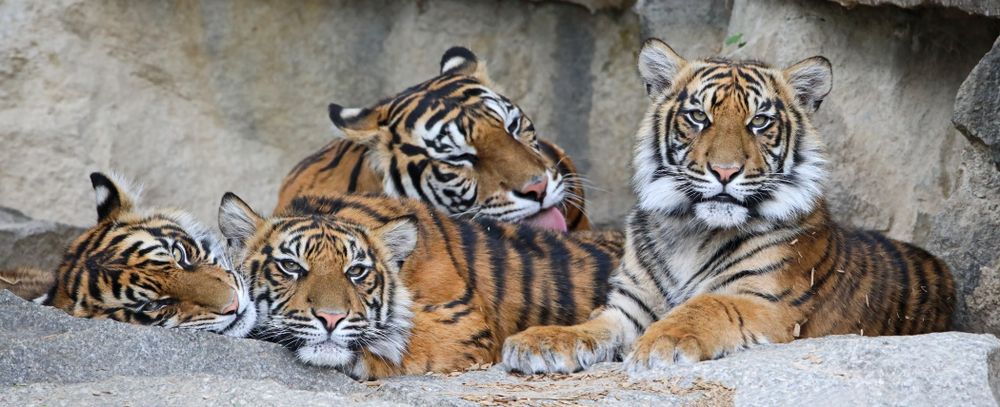
Sunda Tiger
STATUS: Critically Endangered
SCIENTIFIC NAME: Panthera tigris sondaica
The Sunda tigers are distinguished by the thick black stripes on their orange coats.
There are only 400 remaining, all of which live on the island of Sumatra. Conservationists worry that deforestation and poaching (which accounts for 80% of tiger deaths) could lead to their extinction, similar to what happened to their Javan and Balinese peers.
WWF has been working to help protect areas where these tigers live and breed. Research using camera traps will also help to estimate population size.
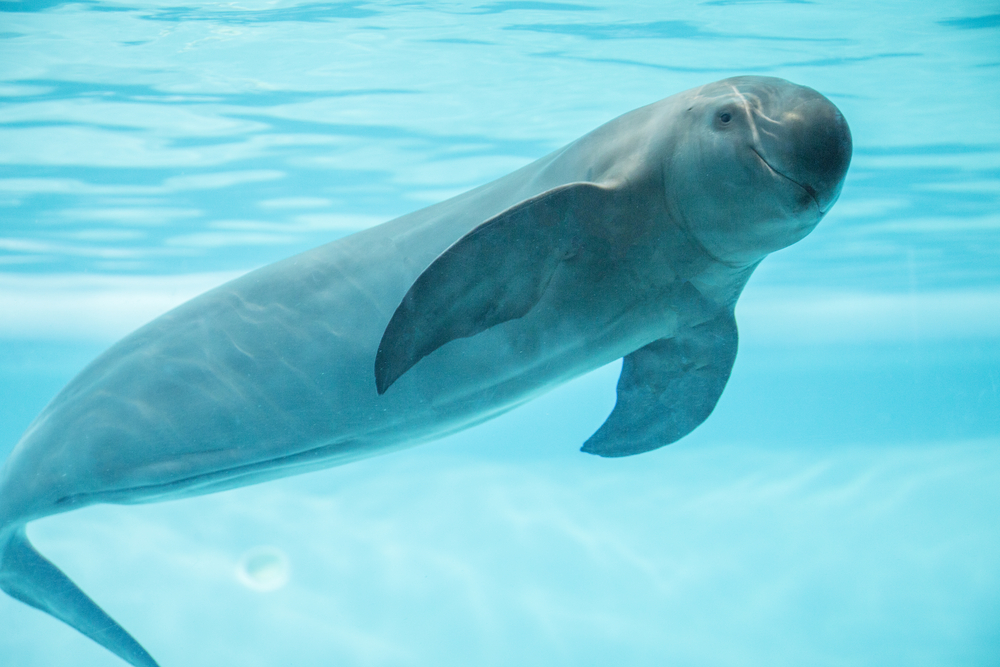
Vaquita
STATUS: Critically Endangered
SCIENTIFIC NAME: Phocoena sinus
With a population of just 10, the vaquita is the world's rarest marine mammal.
Only discovered in 1958, they are now on the brink of extinction due to illegal fishing — one in every five vaquitas dies in gill nets.
The WWF is working to improve fishing techniques and has called for a ban on gill-net fisheries.
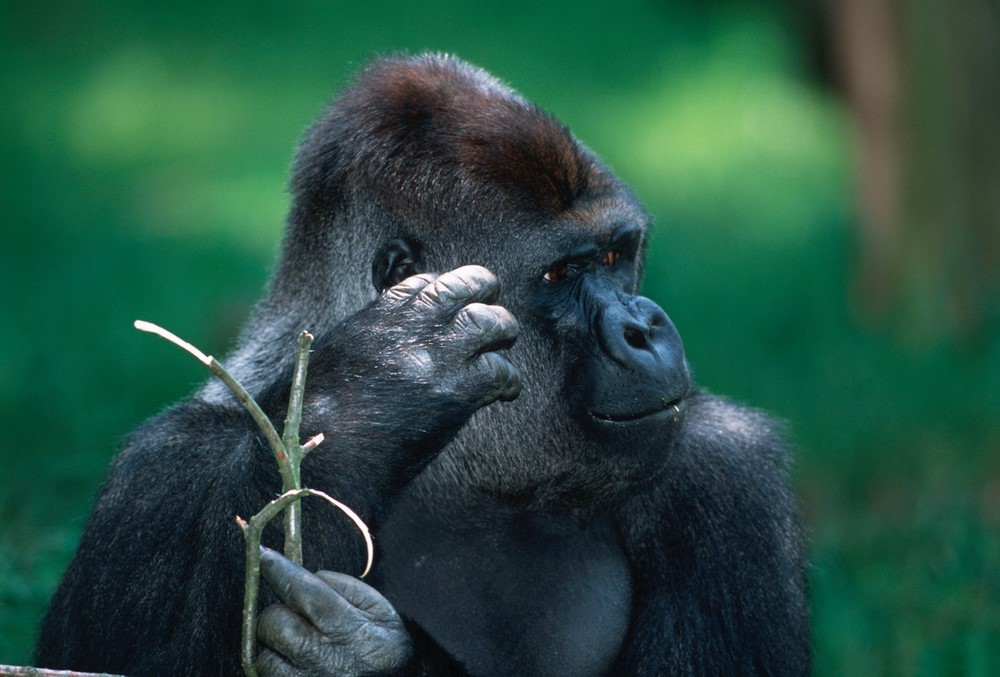
Western Lowland Gorilla
STATUS: Critically Endangered
SCIENTIFIC NAME: Gorilla gorilla gorilla
The exact number of Western Lowland gorillas is unknown due to their remote habitat in the African rainforest.
They are found in Cameroon, the Central African Republic, the Democratic Republic of Congo, Equatorial Guinea, Gabon and the Republic of Congo.
Despite having the highest population amongst all gorilla subspecies, the Western Lowland gorilla population has plummeted by 60% over the past 25 years due to poaching, bush-meat hunting and disease, such as Ebola, according to the WWF.
WWF supports programs that help to stop poaching and to help develop an Ebola vaccine for the gorillas.
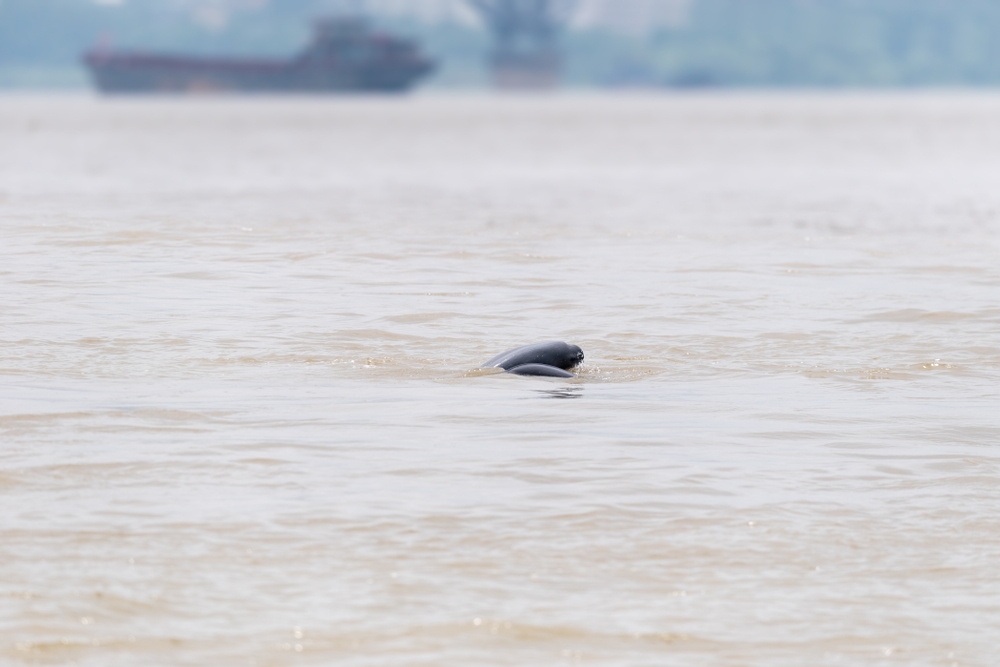
Yangtze Finless Porpoise
STATUS: Critically Endangered
SCIENTIFIC NAME: Neophocaena asiaeorientalis ssp. Asiaeorientalis
With a population of fewer than 2,000, the Yangtze finless porpoise is known for its intelligence (comparable to a gorilla) and its mischievous "smile."
They can be found in the the Yangtze River, but overfishing and pollution could lead to their extinction. The species once shared the river with the Baiji dolphin before human activity wiped out the species.
Working with partners, the WWF has helped to reconnect more than 40 floodplain lakes to the Yangtze River.
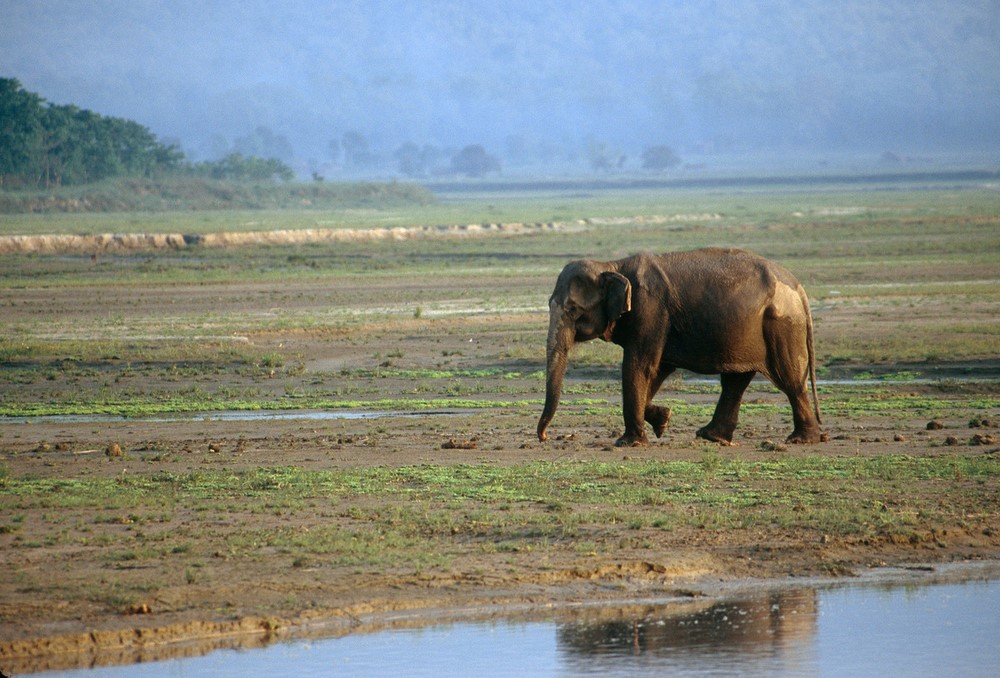
Asian Elephant
STATUS: Endangered
SCIENTIFIC NAME: Elephas maximus indicus
The largest land mammal on the Asian continent, the Asia elephant weighs around 11,000 pounds and lives in 13 countries across South and Southeast Asia.
Due to habitat loss from expanding human development, farming and mining, 70% of elephants are now found outside protected land.
Nilanga Jayasinghe, senior program officer for Asian Species for WWF said: "Habitat loss and the resulting human-elephant conflicts (HEC), which are negative interactions that occur when elephants enter or pass through human-inhabited areas, are the biggest threats to Asian elephants today."
"World Wildlife Fund is working with communities and other partners across numerous elephant range country landscapes to reduce and manage HEC and for the benefit of both elephants and people."
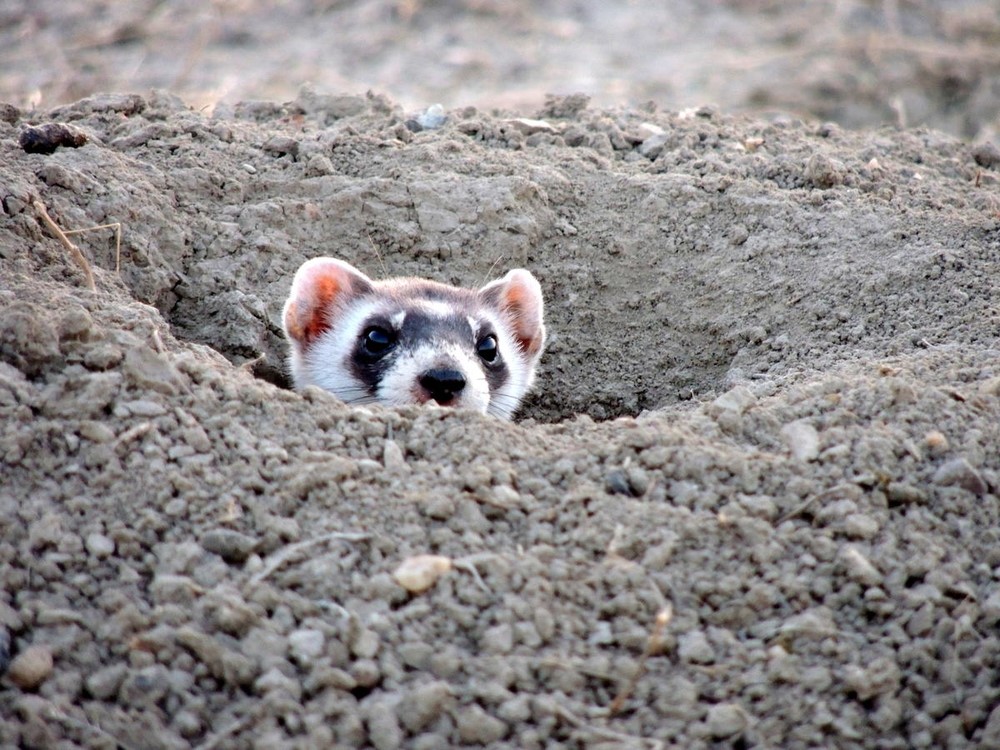
Black-footed Ferret
STATUS: Endangered
SCIENTIFIC NAME: Mustela nigripes
Once thought to be extinct, the black-footed ferret has made a comeback over the last 30 years, thanks to conservation efforts.
Due to these conservation efforts, which have included protection from disease and the establishment of new populations, there are now 300 of the ferrets in North America.
However, disease and habitat loss remain the key threats to the survival of these creatures.
"Restoring populations of the endangered black-footed ferret requires innovation and perseverance,” said Kristy Bly, WWF senior wildlife conservation biologist.
"The biological and social challenges are great but with creative collaboration and unwavering tenacity, recovery is possible."
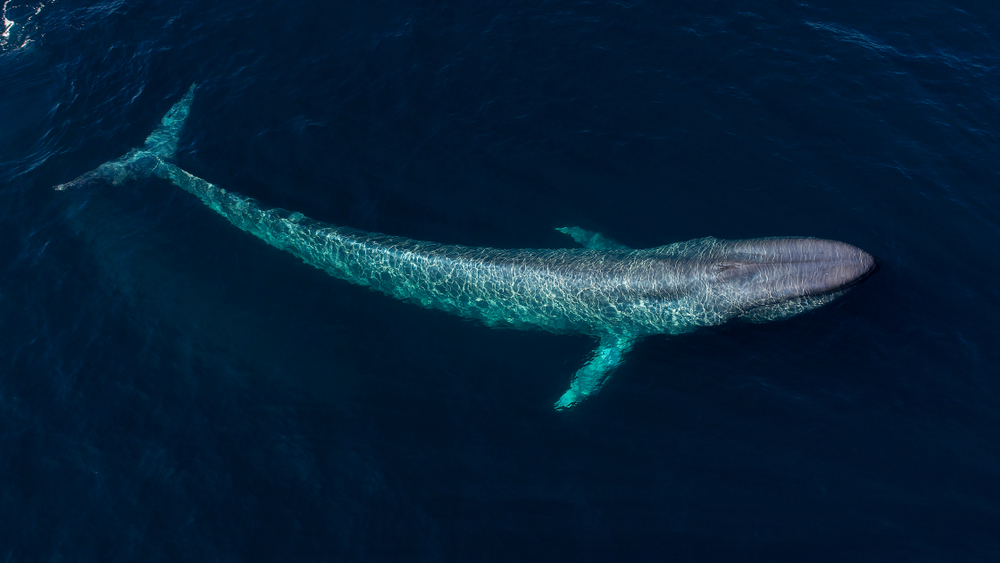
Blue Whale
STATUS: Endangered
SCIENTIFIC NAME: Balaenoptera musculus
The largest animal in the world has a heart the size of a Volkswagen Beetle, weighs close to 200 tons and is the loudest animal on Earth, with their calls reaching 188 decibels.
Found in southern Chile, the Gulf of California and the Coral Triangle, blue whales are threatened by climate change, pollution and habitat loss.
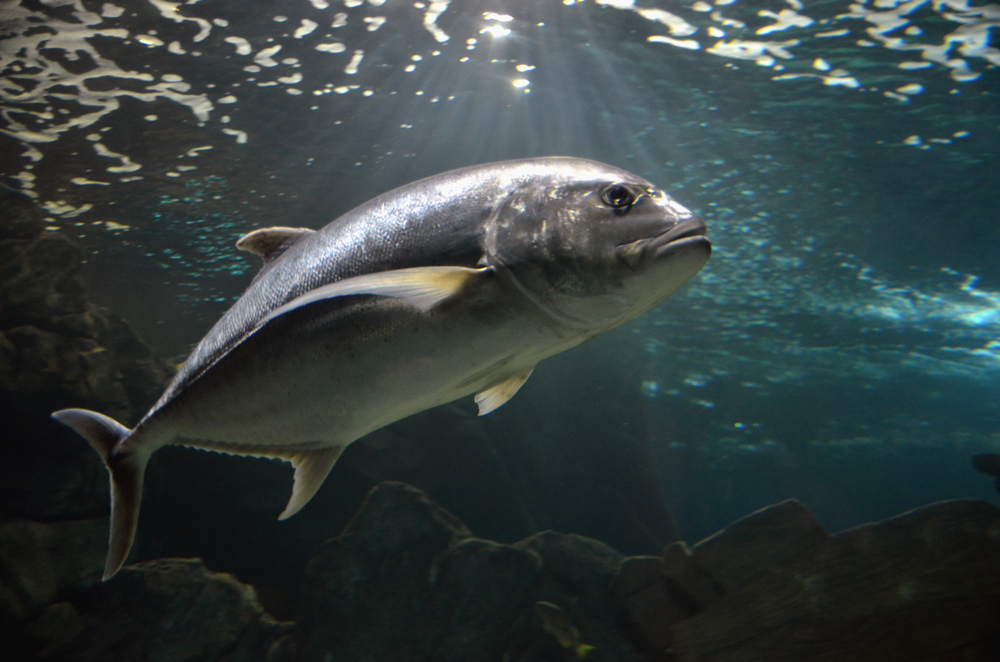
Bluefin Tuna
STATUS: Endangered
WEIGHT: 1,500 pounds
Found in the Coral Triangle, bluefin tuna can live for up to 40 years and are the largest of all tunas.
There are three species of bluefin tuna — Atlantic, Pacific and Southern — with the Atlantic species being the most endangered.
Overfishing and illegal fishing are the main threats to bluefin tuna.
Since 2008, WWF has been tagging Atlantic bluefin tuna to find out more about the migration patterns; the agency is also doing work to prevent overfishing.
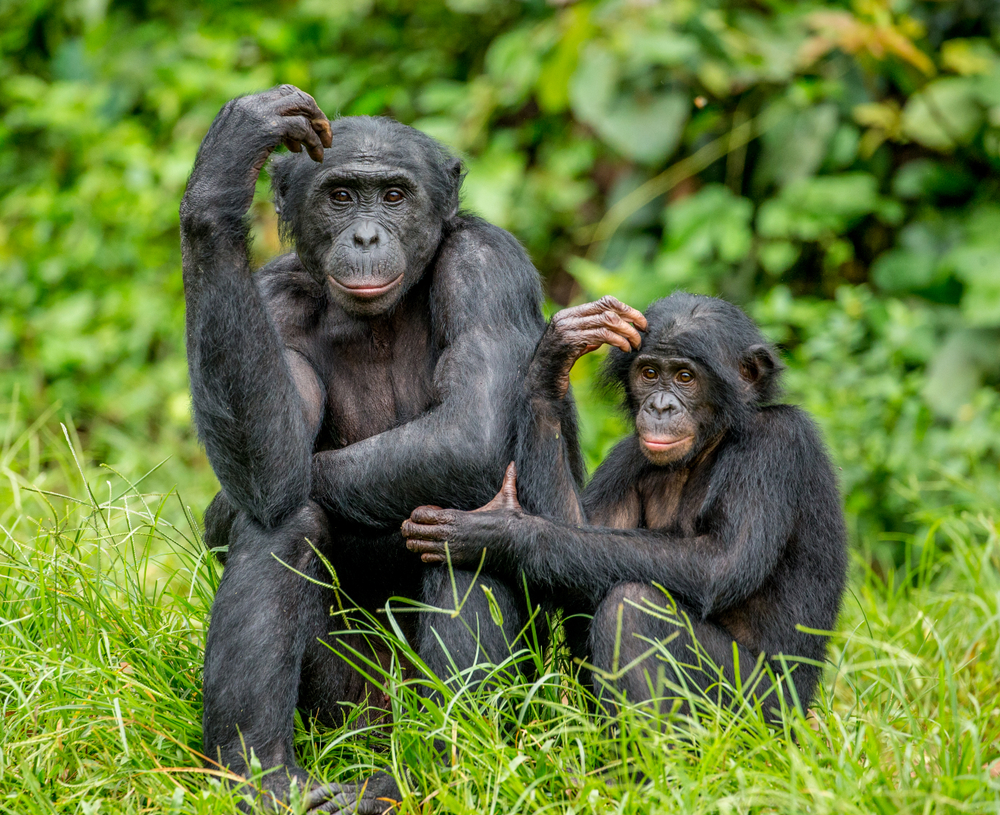
Bonobo
STATUS: Endangered
SCIENTIFIC NAME: Pan paniscus
Bonobos look very similar to chimpanzees but are generally smaller, leaner and darker in coat color than their closest living relatives.
They share 98.7% of their DNA with humans and can be found near the Congo River, in the Democratic Republic of Congo.
Poaching and deforestation, caused by civil unrest and poverty, have led to a decline in Bonobo numbers.
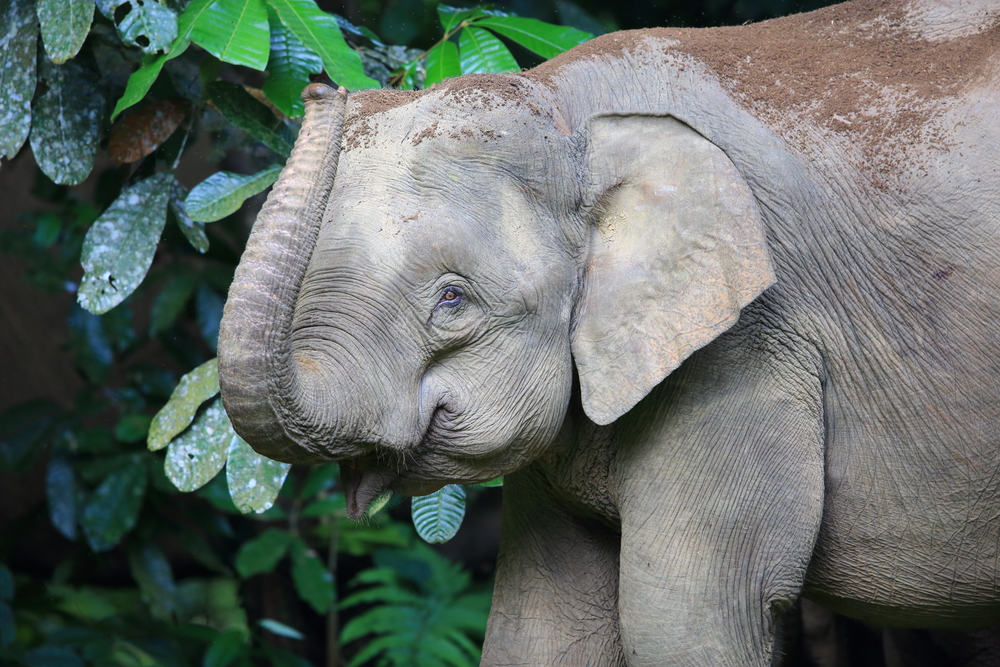
Borneo Pygmy Elephant
STATUS: Endangered
SCIENTIFIC NAME: Elephas maximus borneensis
With a gentle nature, oversized ears, plump bellies and a cute baby face, the Borneo pygmy elephant looks a lot like Dumbo.
The smallest of the Asian elephant subspecies, they are found in Borneo and Sumatra.
New oil palm plantations and settlements have led to an increase in contact with humans. Illegal snares have also had an impact on population numbers.
In 2005, WWF set up a successful collaring program and was the first research conducted on this population.
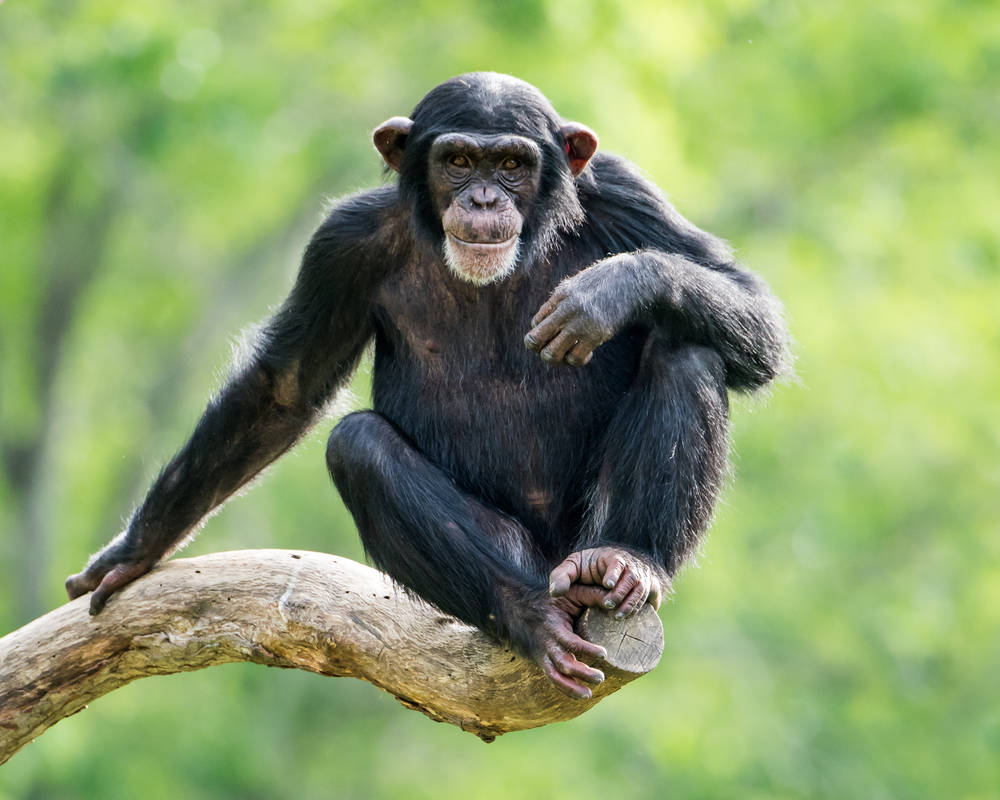
Chimpanzee
STATUS: Endangered
SCIENTIFIC NAME: Pan troglodytes
Chimps are our closest cousins, sharing 98% of our genes, and can live to be over 50 years old.
They live in Central Africa, and while a research study revealed population numbers were higher than first thought, they are still at risk of extinction due to poaching (baby chimps are often sold as pets) and disease.
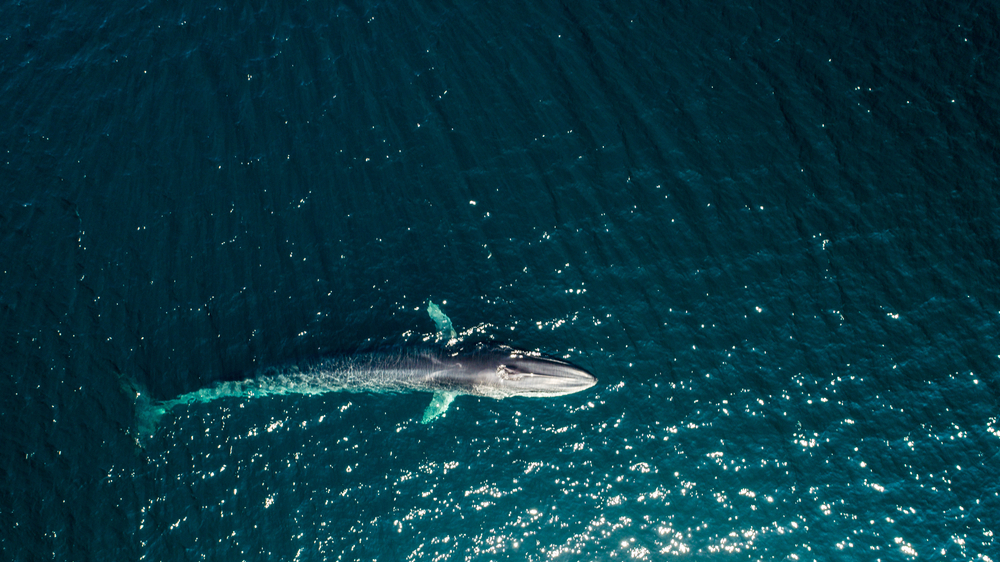
STATUS: Endangered
SCIENTIFIC NAME: Balaenoptera physalus
The fin whale is the second largest mammal in the world and can weigh up to 80 tons. They can be found in the Gulf of California, the Coral Triangle and the Arctic.
They play an important role in the marine ecosystem but have been severely impacted by commercial whaling.
Commercial whaling still remains a threat, as well as habitat loss, pollution and climate change.
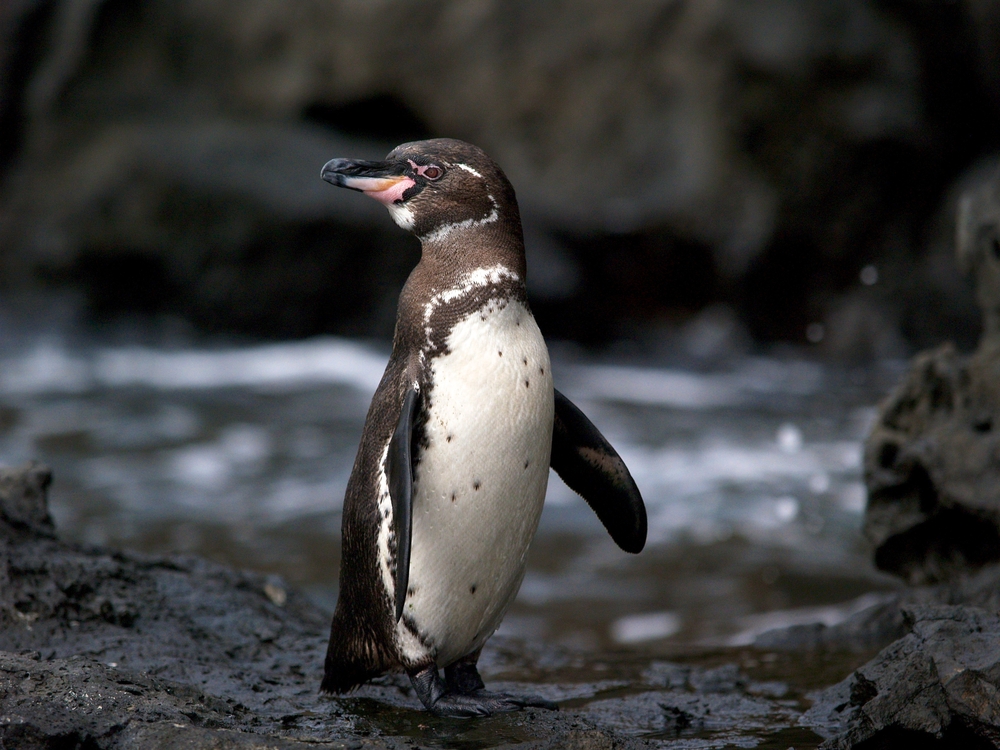
Galápagos Penguin
STATUS: Endangered
SCIENTIFIC NAME: Spheniscus mendiculus
These adorable creatures live in the volcanic islands of the Galápagos and are the only penguins that can be found north of the equator.
However, Galápagos penguins are at risk due to pollution and climate change.
Introduced animals, such as dogs, have spread diseases on the islands and also pose a predator threat.
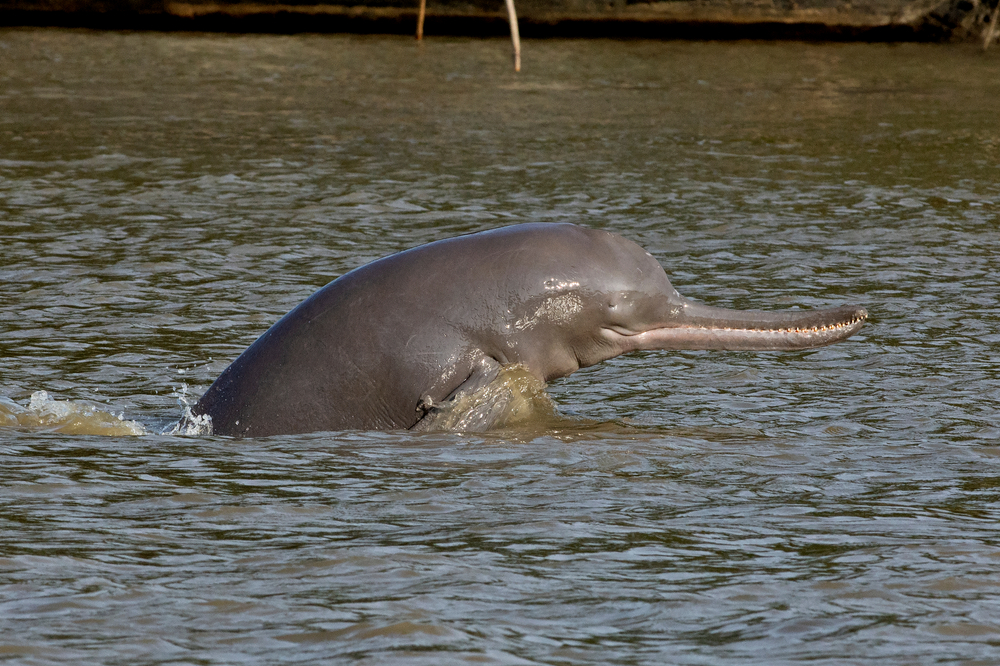
Ganges River Dolphin
STATUS: Endangered
SCIENTIFIC NAME: Platanista gangetica gangetica
First discovered in 1801, dolphins are one of the oldest creatures in the world.
Ganges River dolphins are found only in freshwater, where they hunt using ultrasonic sounds due to their essential blindness.
Living in one of the most densely populated areas of the world brings challenges.
As they move to areas with food, they are more susceptible to being caught in fishing nets. River pollution also impacts the health of the dolphins.
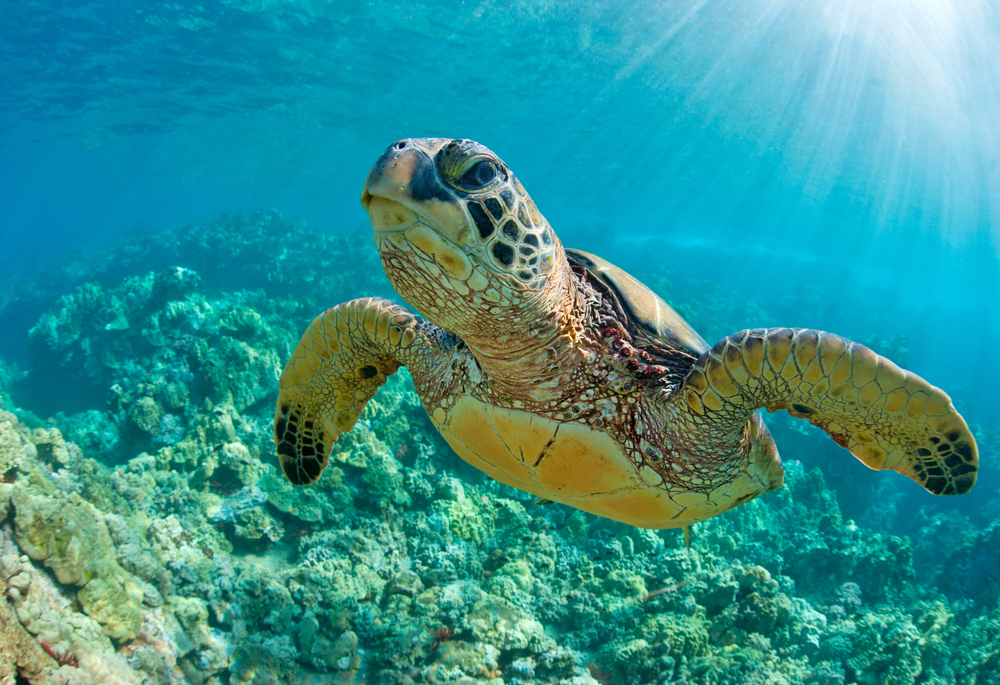
Green Turtle
STATUS: Endangered
SCIENTIFIC NAME: Chelonia mydas
Not only is it the only herbivore but the green sea turtle is also the largest among its species.
They can weigh up to 400 pounds and are mostly found in tropical and subtropical waters.
Egg harvesting, hunting and loss of nesting sites as well as being trapped in nets are all real threats to the survival of the green turtle.
Pollution and the mass production of plastics has also had a devastating impact, according to the WWF.
WWF is working with fisheries to reduce turtle by-catch with the introduction of turtle-friendly hooks.
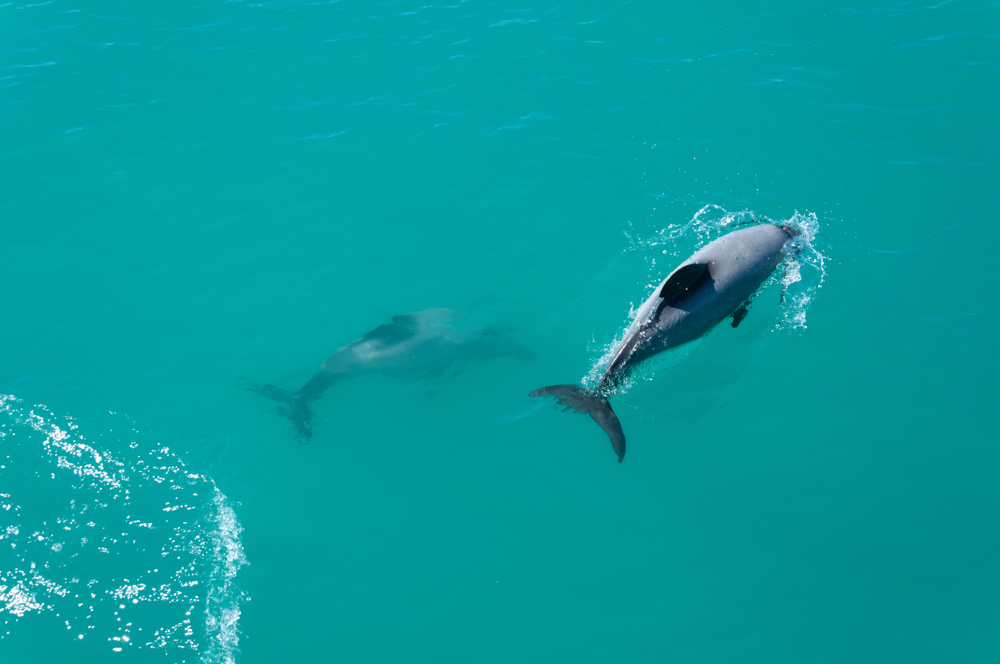
Hector's Dolphin
STATUS: Endangered
SCIENTIFIC NAME: Cephalorhynchus hectori
Found along the North Island of New Zealand, Hector's dolphins are smallest and rarest in the world.
With an estimated population of 7,000, they have a dorsal fin shaped like Mickey Mouse ears and are at risk of becoming extinct.
Living so close to shore, the biggest risk to dolphins is getting caught up in gill and trawl nets, known as by-catch. Seabed mining, pollution and coastal developments also play their part.
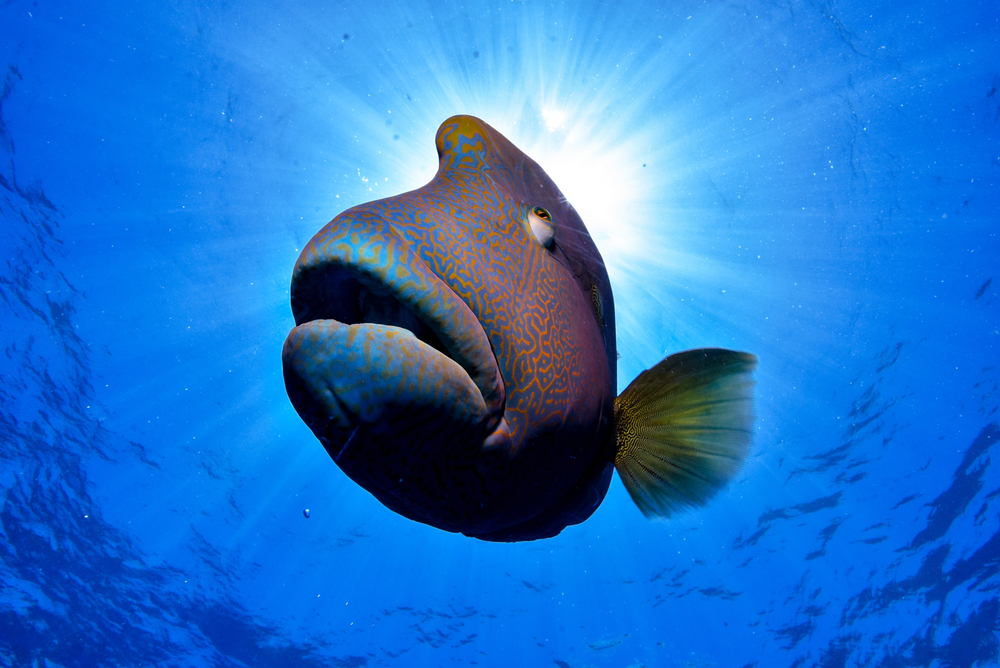
Humphead Wrasse
STATUS: Endangered
SCIENTIFIC NAME: Cheilinus undulatus
These coral fish normally weigh around 400 pounds and can grow up to 6 feet long. Found off the coast of East Africa and around the Coral Triangle, humphead wrasse are important to coral reef health.
Considered a luxury food item in South East Asia, the humphead wrasse is vulnerable to overfishing.
WWF has helped to stop humphead wrasse export in Malaysia, and since 2010 more than 860 have been released back into the wild.
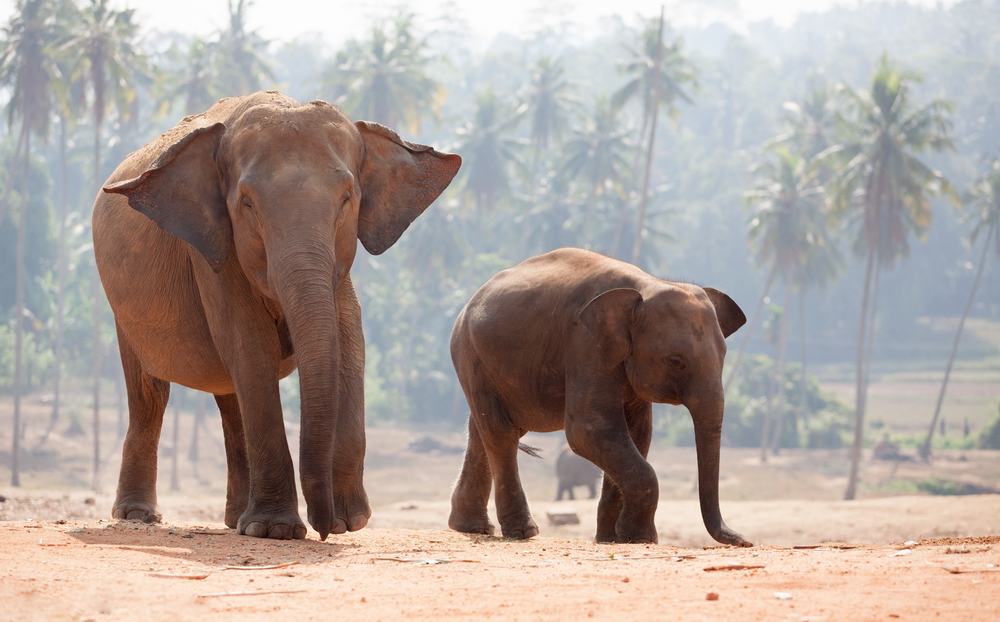
Indian Elephant
STATUS: Endangered
SCIENTIFIC NAME: Elephas maximus indicus
The Indian elephant can weigh up to 5 tons and can grow up to 21 feet long. They can spend up to 19 hours a day eating, mainly grass.
China's ban on ivory trading, in 2017, has led to a decrease in demand but a more pressing issue is the loss of habitat due to an increase in human population.
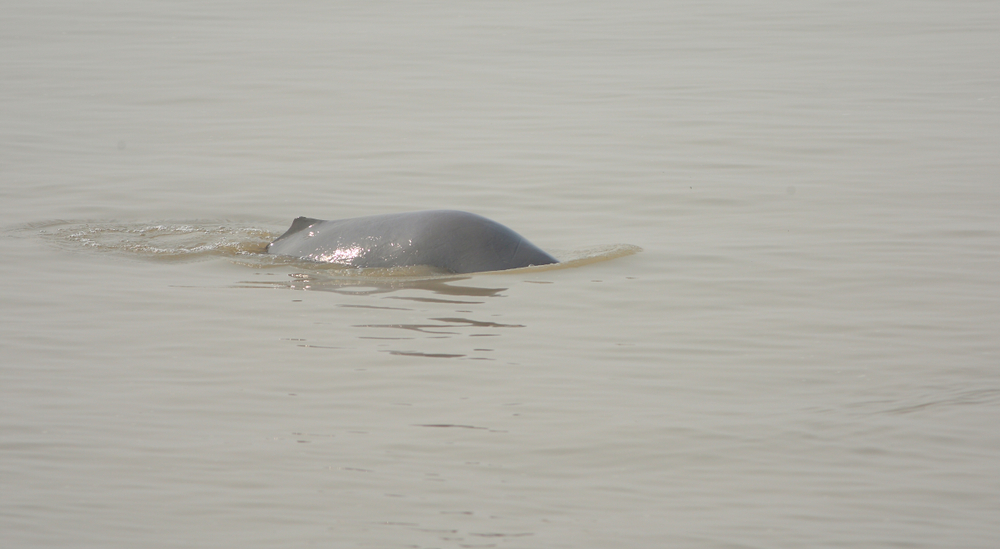
Indus River Dolphin
STATUS: Endangered
SCIENTIFIC NAME: Platanista minor
These curious-looking dolphins can be found in freshwater rivers such as the Indus River in Pakistan and the River Beas, in Punjab, India.
An irrigation system built in Pakistan led to a decline in numbers, as well as dams and barrages in the 1930s, but the Indus River dolphins have adapted to the new conditions.
Working with the Sindh Agriculture Extension Department, the WWF works to improve agricultural practices near their habitat; the WWF has also saved more than 80 of the dolphins from irrigation canals.
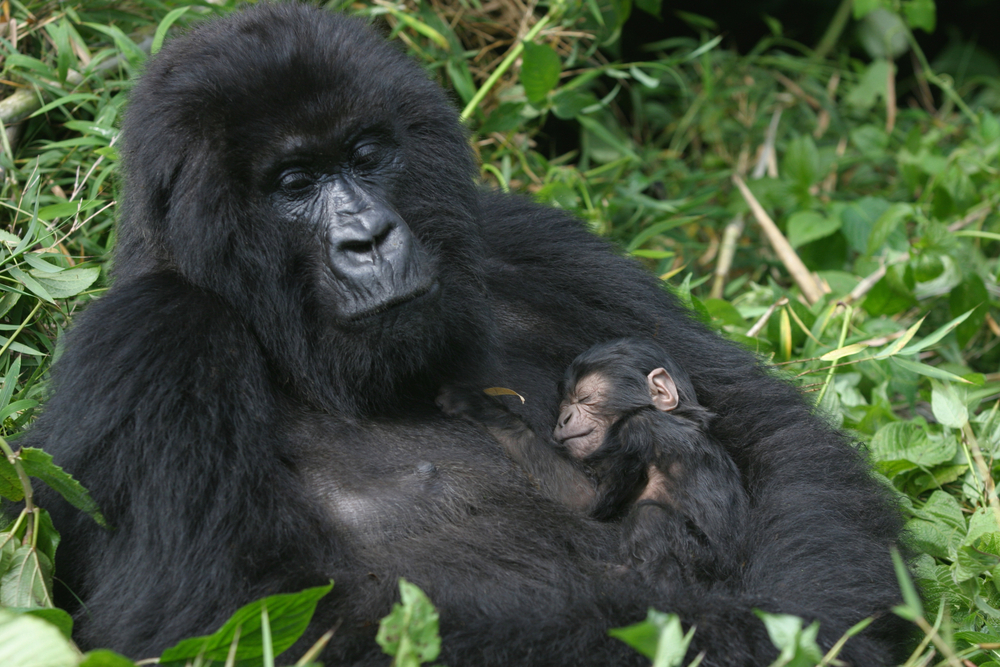
Mountain Gorilla
STATUS: Endangered
SCIENTIFIC NAME: Gorilla beringei beringei
With a population of more than 1,000, the mountain gorilla lives in just two areas, the Virunga Mountains, along the borders of Democratic Republic of Congo, Rwanda and Uganda, and the Bwindi Impenetrable National Park in Uganda.
Conservation efforts have seen an increase in the population; but poaching, disease and an encroaching human population still pose threats.
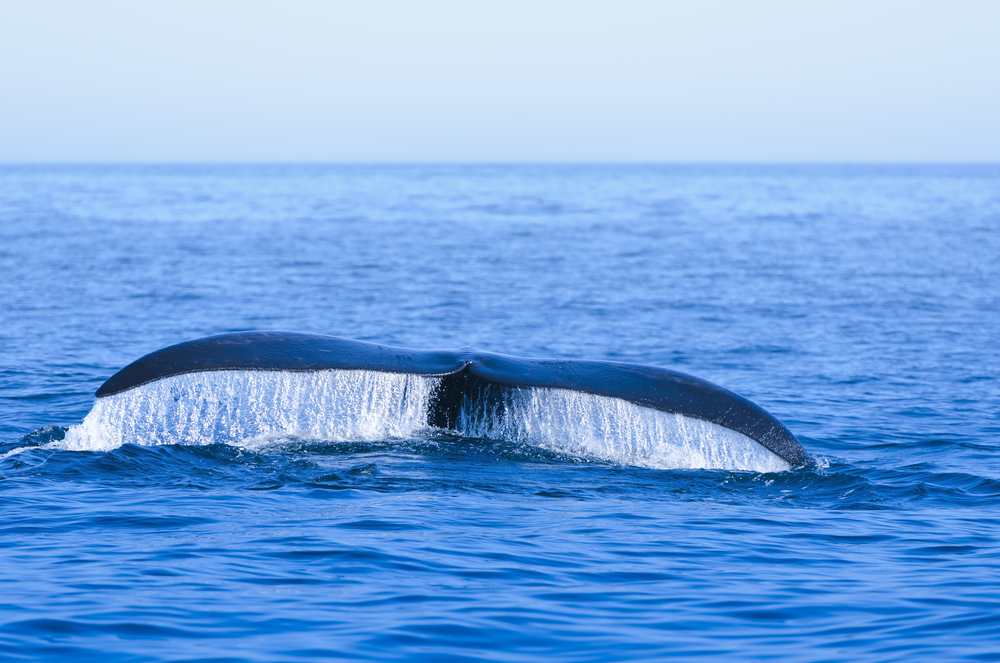
North Atlantic Right Whale
STATUS: Endangered
SCIENTIFIC NAME: Eubalaena glacialis
Weighing up to 70 tons, these mammals can easily be identified by the white calluses on their heads.
They feed on plankton and are usually found in coastal waters.
They are the most endangered of all large whales, due to historic human exploitation.

Red Panda
STATUS: Endangered
SCIENTIFIC NAME: Ailurus fulgens
More than 50% of the red panda population is found in the eastern Himalayas and they are primarily herbivores.
They have bear-like bodies but are only slightly larger than a domestic cat.
Climate change, poaching and hunting traps have impacted the number of Red Pandas and there are now only 10,000 left in the wild.
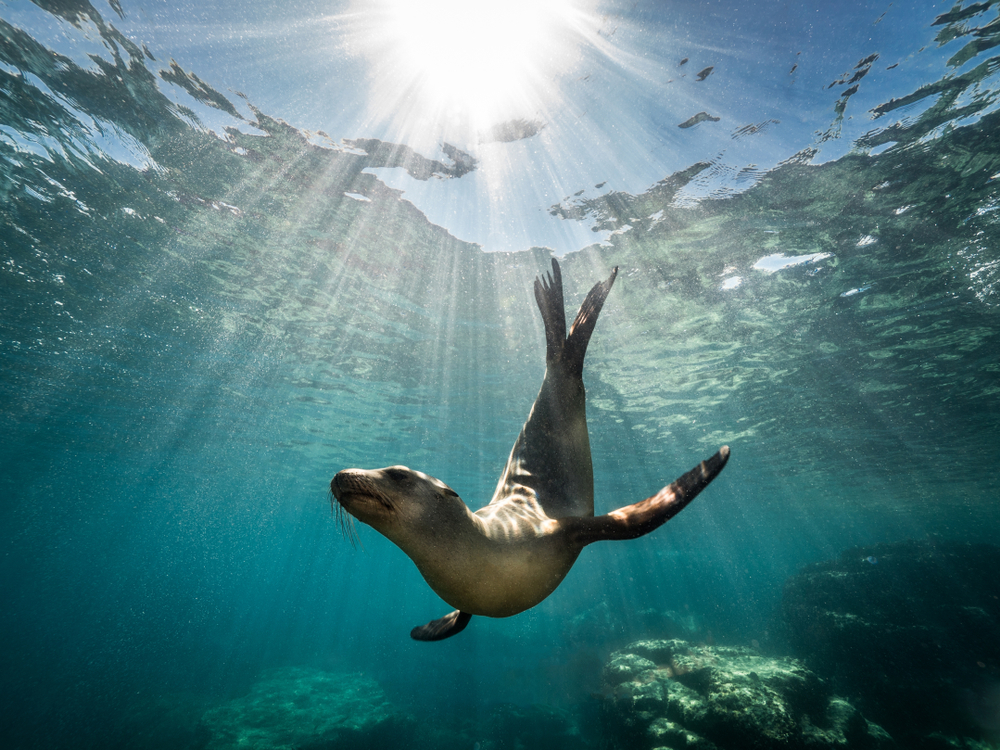
Sea Lions
STATUS: Endangered
SCIENTIFIC NAME: Zalophus wollebaeki
Sea Lions are found in large colonies on the Galápagos, and are the most common pinnipeds to be found in the area. Sea Lions can grow up to 6 feet (1.8 meters) long and weigh more than 400 pounds (181 kilograms).
Sea lions are vulnerable to climate change. Introductions of new species, such as dogs, can spread diseases in the area and also threaten the creatures.
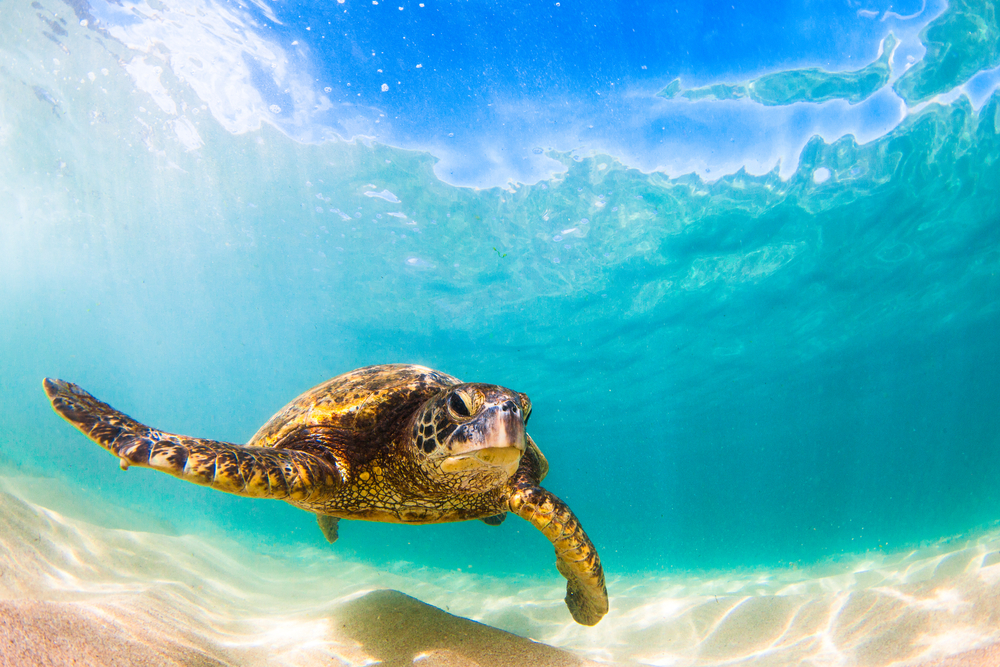
Sea Turtle
STATUS: Endangered
SCIENTIFIC NAME: Cheloniidae and Dermochelyidae families
Seven species of turtle live in the ocean. They can be found in the Mesoamerican Reef, Coastal East Africa, the Coral Triangle, the Galápagos and the Gulf of California.
Climate change, by-catching, habitat destruction and being hunted for their meat, skin and shells have led to a decline in their numbers.
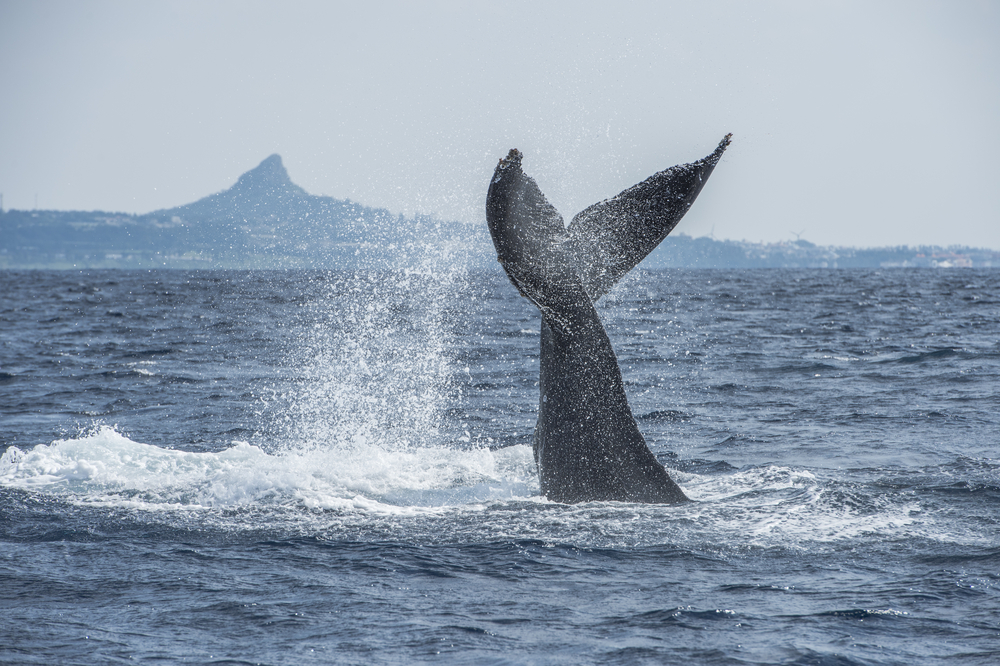
Sei Whale
STATUS: Endangered
SCIENTIFIC NAME: Balaenoptera borealis
The sei whale, being able to reach up to 30 miles per hour (48 kilometers per hour), is the fastest whale in the world.
These whales live in most of the planet's oceans and seas, except for those in tropical and polar regions. Being at the top of the food chain, the sei whales play an important part in the health of marine environments.
While commercial whaling has been banned, the sei whales are still at risk from scientific whaling in Japan. Every year, 50 sei whales are killed as part of this program.
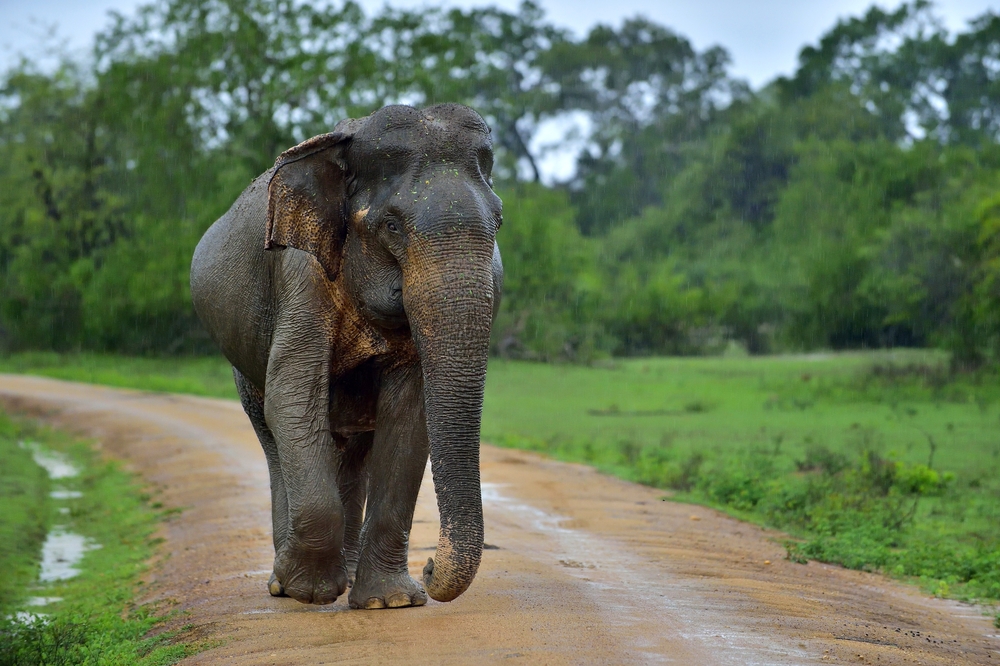
Sri Lankan Elephant
STATUS: Endangered
SCIENTIFIC NAME: Elephas maximus maximus
Weighing up to 12,000 pounds (5,443 kilograms) and growing to over 10 feet (3 meters) tall, the Sri Lanka elephant is one of the largest species of elephant in Asia.
As more and more land in Sri Lanka is cleared for settlement and agriculture, habitat loss and conflict with humans is the elephant's greatest threat. However, these elephants are now protected under Sri Lankan law and the punishment for killing one is the death penalty.
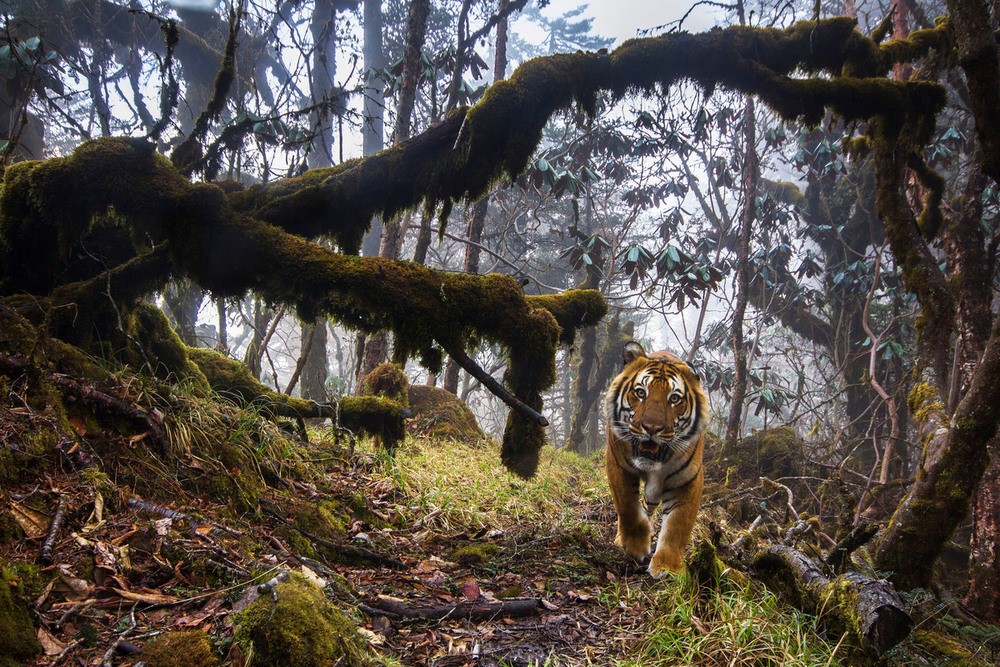
Tiger
STATUS: Endangered
SCIENTIFIC NAME: Panthera tigris
With just 4,000 tigers left in the wild, they are split into two subspecies: the Continental and the Sunda. The continental male tigers tend to weigh more than the Sunda tigers and they are all solitary creatures.
Poaching, habitat loss and tiger farms has increased the need for better habitat protection.
"Ten years ago, World Wildlife Fund joined the 13 tiger range country governments in an effort to double the number of tigers in the wild by 2022, the next Chinese Year of the Tiger," said Nilanga Jayasinghe, senior program officer for Asian Species at the World Wide Fund for Nature. "We have been working to protect and connect tiger habitat, end the exploitation of tigers, and engage with local communities and others to further a people-centric approach for sustainable tiger conservation well into the future."
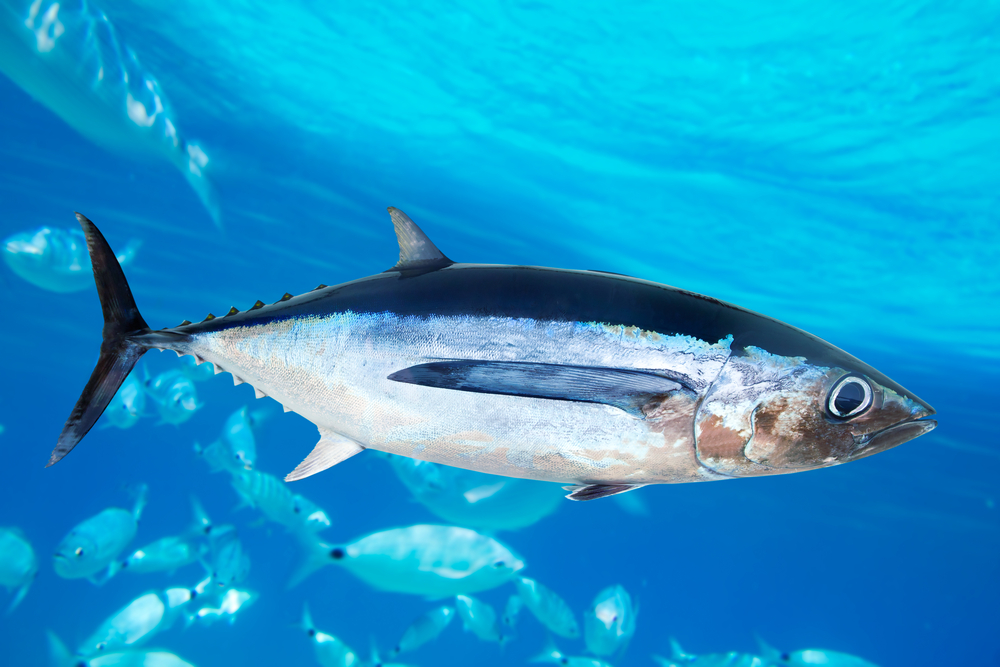
Albacore Tuna
STATUS: Near Threatened
SCIENTIFIC NAME: Thunnus alalunga
Traveling across the oceans and the Mediterranean Sea, the albacore tuna can live for up to 12 years and grow up to 12 feet (3.7 meters) long.
Tuna is an important part of our ecosystem, but overfishing is causing a real threat to their survival.
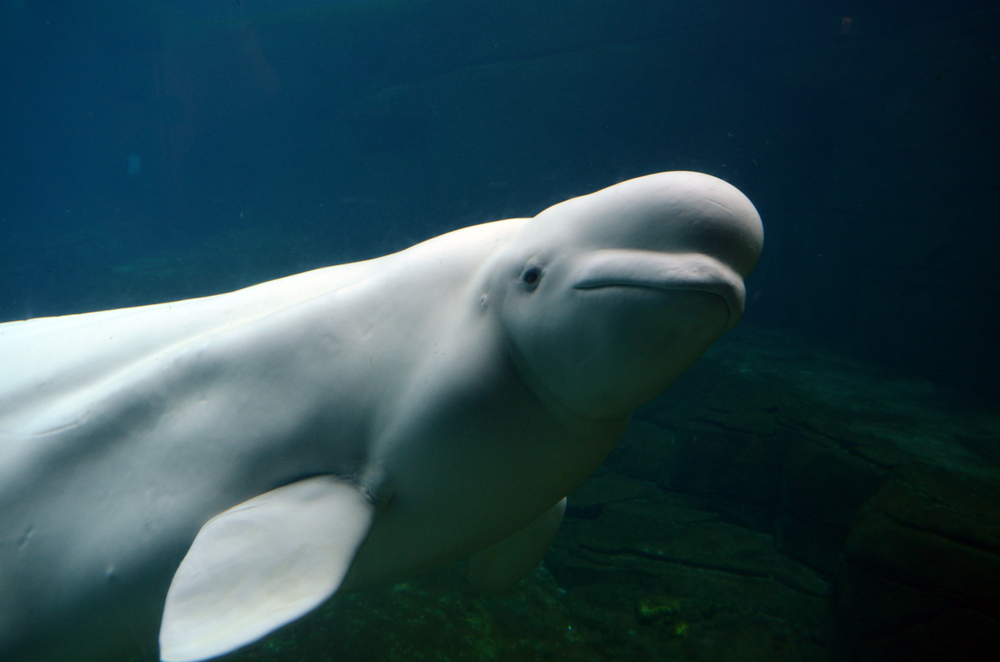
Beluga
STATUS: Near Threatened
SCIENTIFIC NAME: Delphinapterus leucas
Found in the arctic, the beluga whales have distinctive bulbous foreheads that makes it easy for them to make a variety of different facial expressions.
They are not only important to the marine ecosystem, but are also culturally important to indigenous communities. Climate change poses a real threat to the beluga whales, as these creatures depend on sea ice.
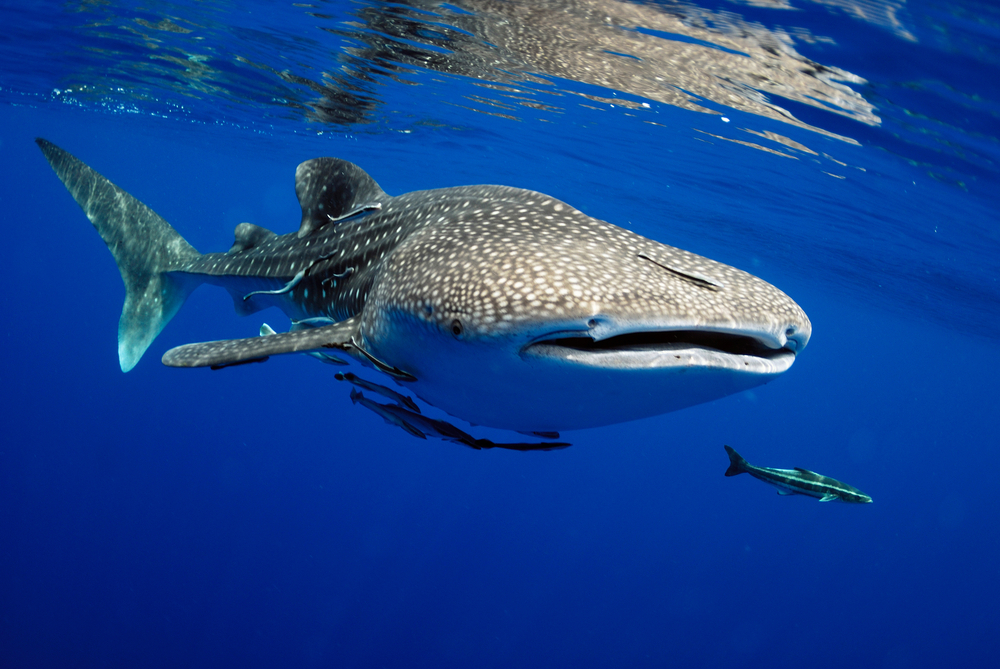
Whale Shark
STATUS: Endangered
SCIENTIFIC NAME: Rhincodon typus
These magnificent creatures, feeding on plankton in and around the Mesoamerican Reef, Coastal East Africa, the Gulf of California and the Coral Triangle, are solitary, preferring to travel alone.
Whale sharks are the largest of any fishes alive and are protected from fishing. However, they are still highly sought after for their meat, fins and oil which causes them a threat.
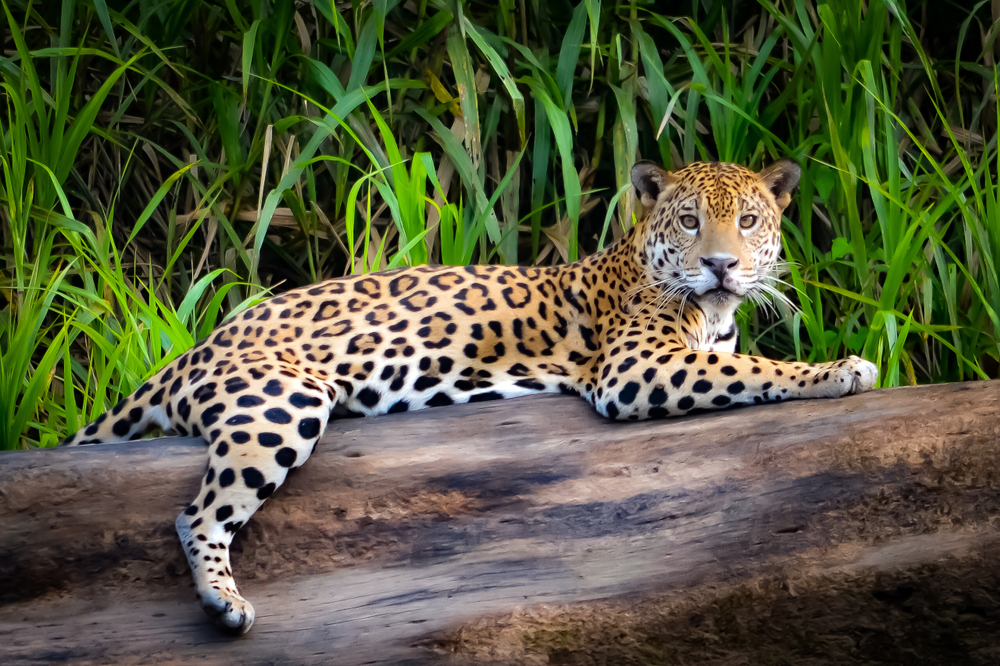
Jaguar
STATUS: Near Threatened
SCIENTIFIC NAME: Panthera onca
Found in the Amazon and Pantanal, these cats require large areas of rainbank and rainforest in order to survive.
Hunting and deforestation has threatened their survival. WWF is working with the Brazilian government to ensure parts of the Amazon can be protected for the Jaguars.
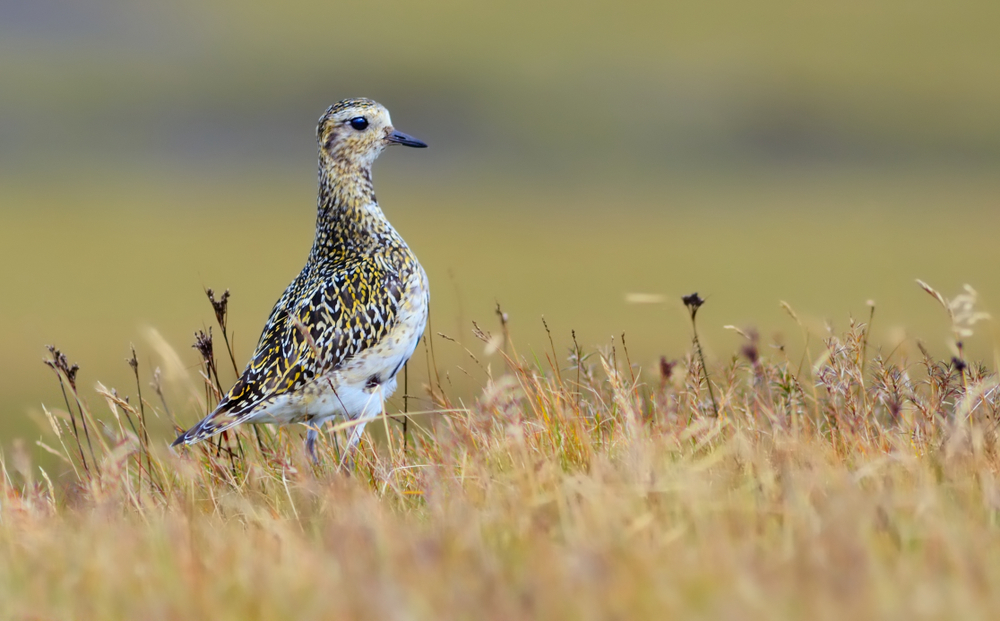
Mountain Plover
STATUS: Near Threatened
SCIENTIFIC NAME: Charadrius montanus
These feathered beauties are one of 12 birds to inhabit the western Great Plains.
Because they only nest on bare ground or areas with sparse vegetation, such as prairie dog towns, the loss of these areas due to crop planting is their biggest threat.
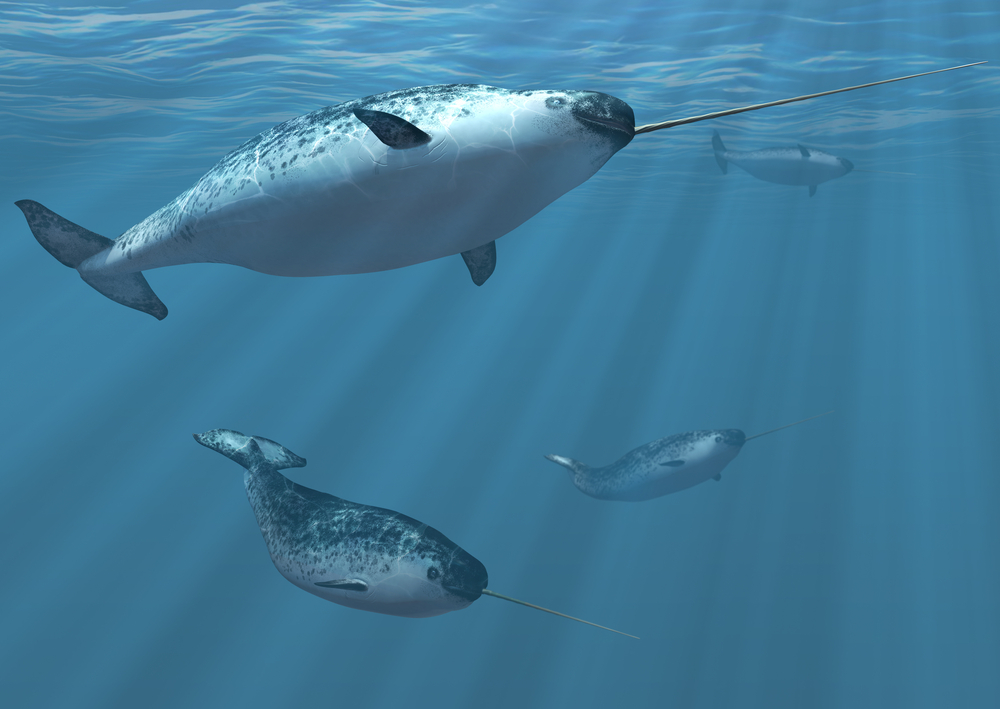
Nawhal
STATUS: Near Threatened
SCIENTIFIC NAME: Monodon monoceros
With its unicorn-like tusk, these quirky-looking creatures spend most of their time in the Arctic waters of Canada, Greenland, Norway and Russia. The narwhal's tusk is actually a tooth and can grow up to 12 feet (3.7 meters).
Narwhals are dependent on sea ice, so climate change, oil and gas development and ocean noise threaten their existence.
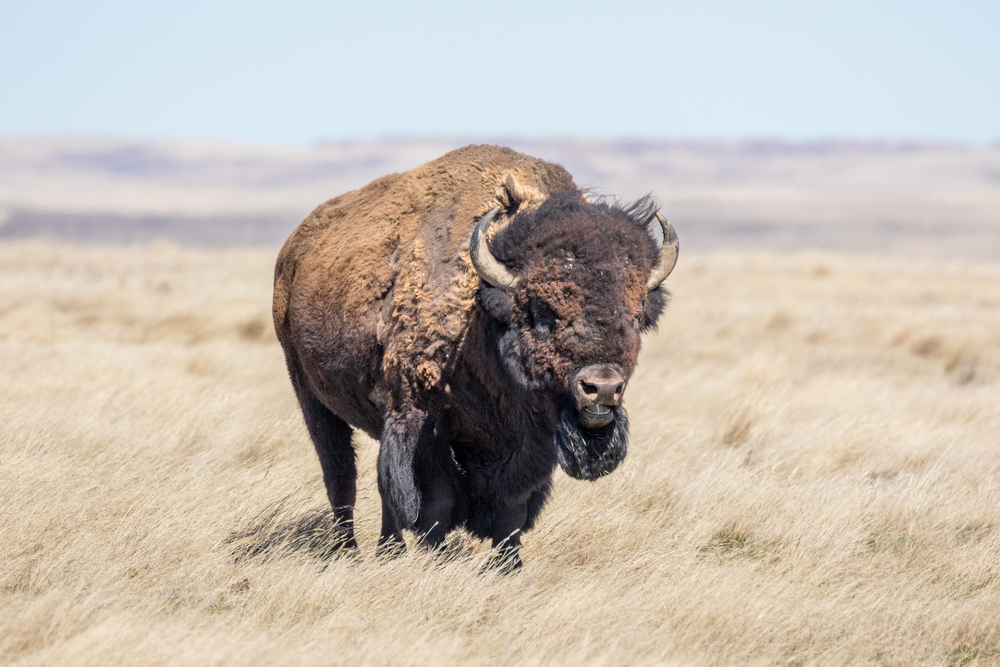
Plains Bison
STATUS: Near Threatened
SCIENTIFIC NAME: Bison bison bison
These magnificent creatures date back to the Ice Age and at one point in time, there were more than 30 million living in North America. That number has fallen rapidly over just a few decades and there are now only 20,000 left in the wild.
WWF is working with several Native American tribes to increase the number of bison on grasslands.
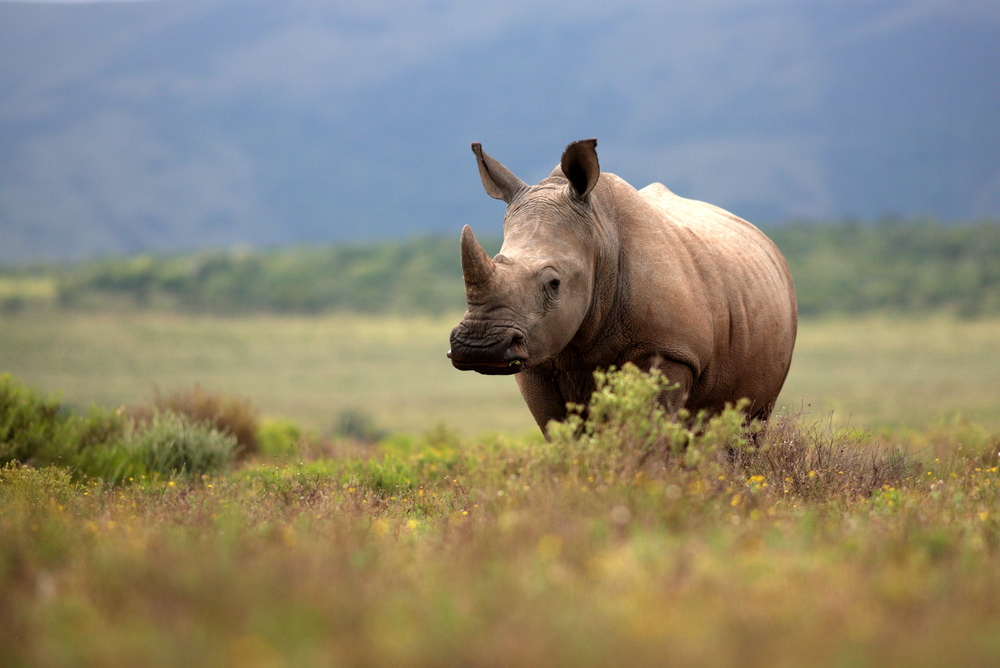
White Rhino
STATUS: Near Threatened
SCIENTIFIC NAME: Ceratotherium simum
There are two subspecies of the White Rhino — the northern white rhino and the southern white rhino — and they both are found in Africa. Poaching has led to a decline in rhino numbers.
There are just under 17,000 southern white rhinos left in the wild. They live in protected areas and private game reserves in South Africa, Namibia, Zimbabwe, and Kenya.
Unfortunately, there are only two northern white rhinos left on the planet, both females, and they live at the Ol Pejeta Conservancy in Kenya.
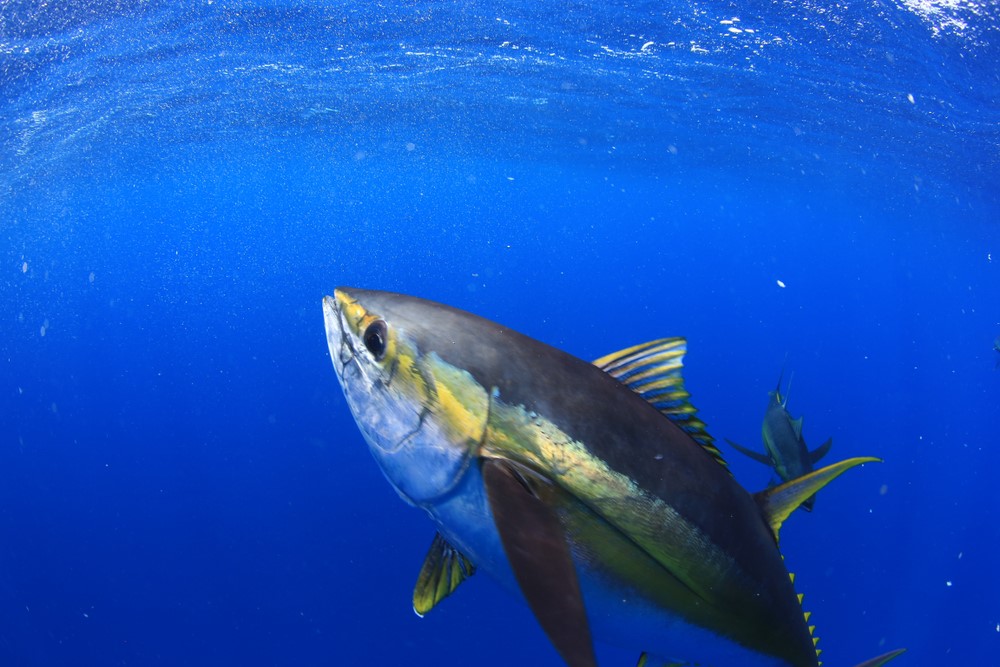
Yellowfin Tuna
STATUS: Near Threatened
SCIENTIFIC NAME: Thunnus albacares
Yellowfin Tuna can weigh up to 450 pounds (204 kilograms) and are found in the Pacific, Atlantic and Indian Oceans.
They are able to breed year-round.
Overfishing and bycatching has led to the steady decline of the population.
For more information on endangered species or how you can help visit https://www.wwf.org.uk/.


